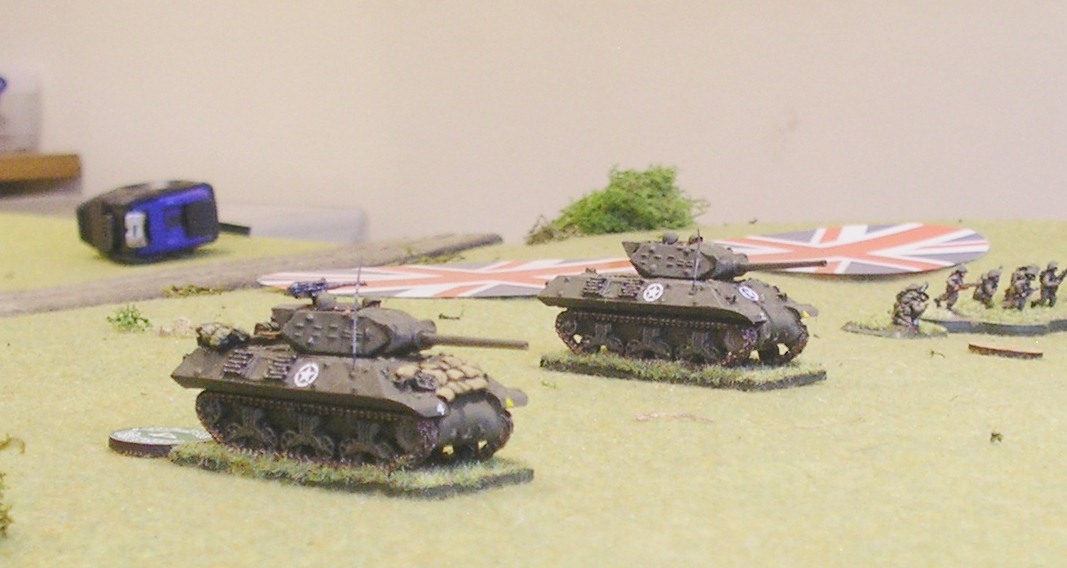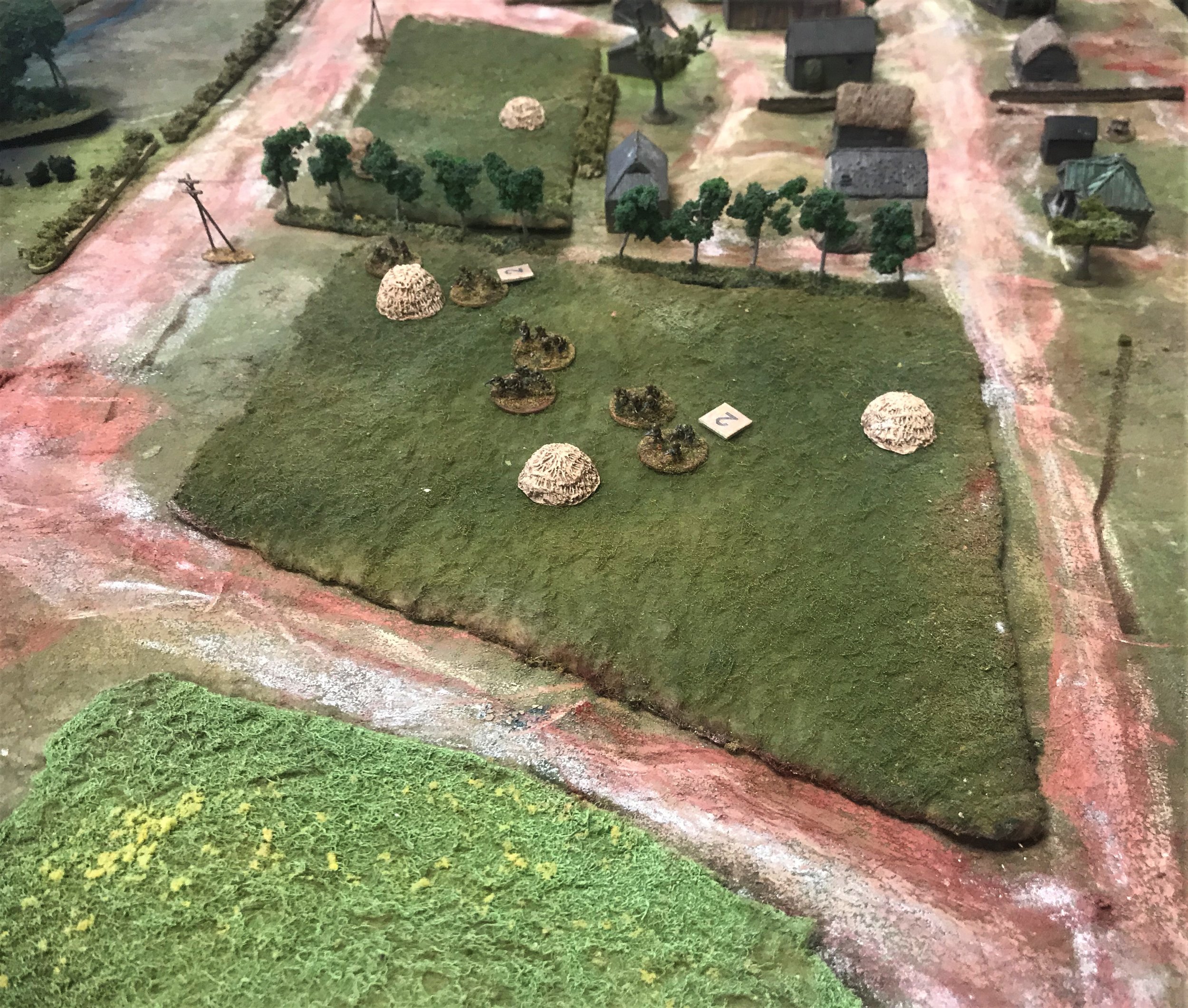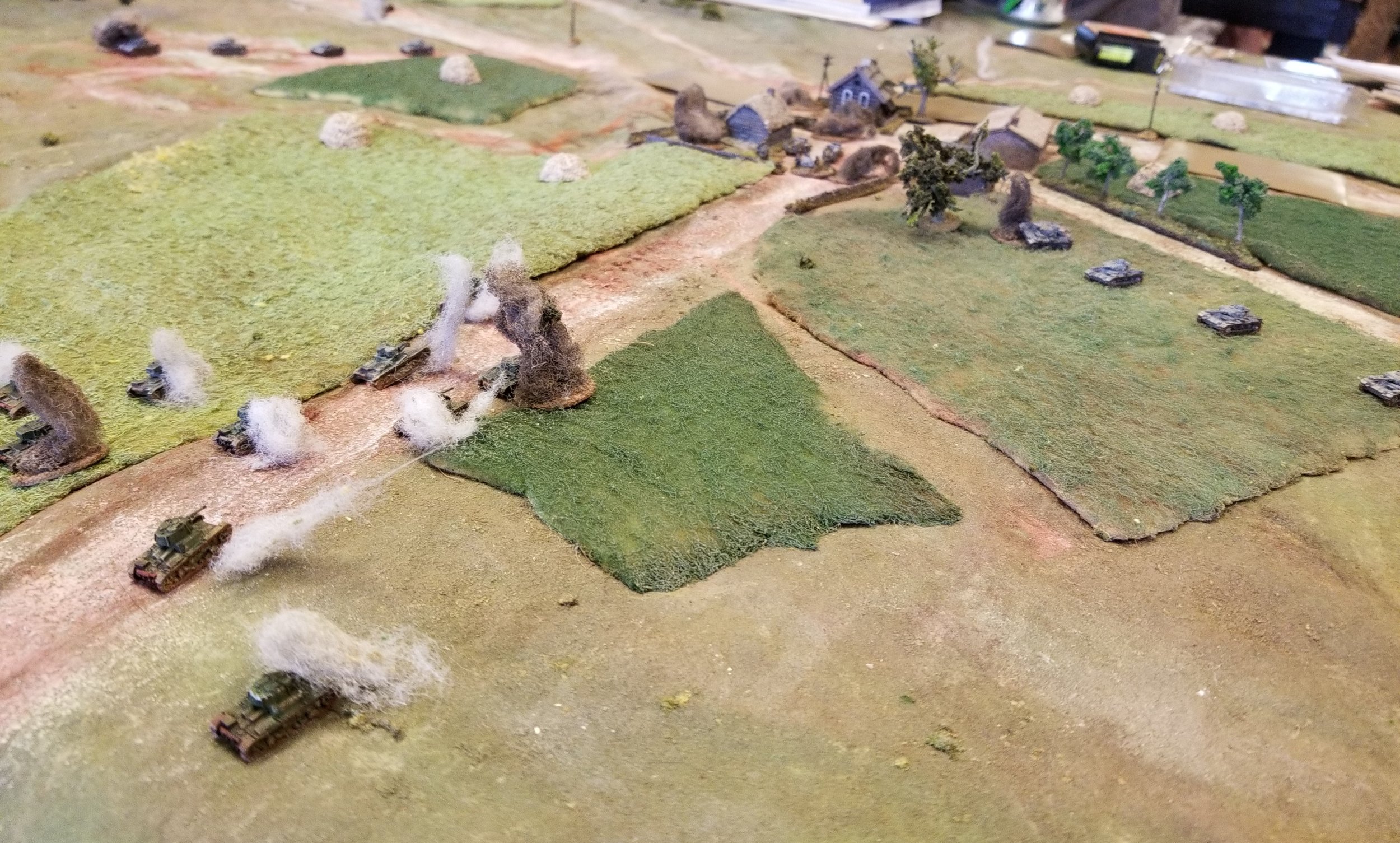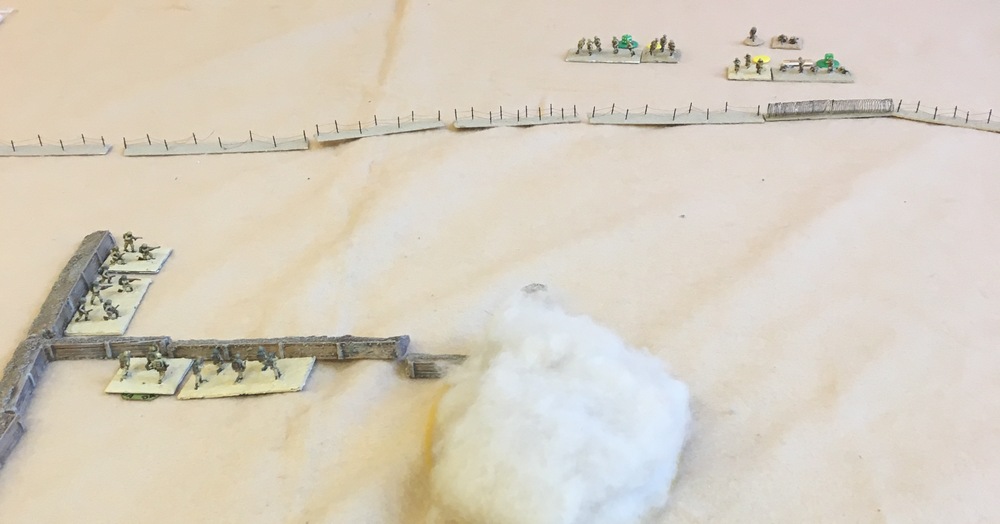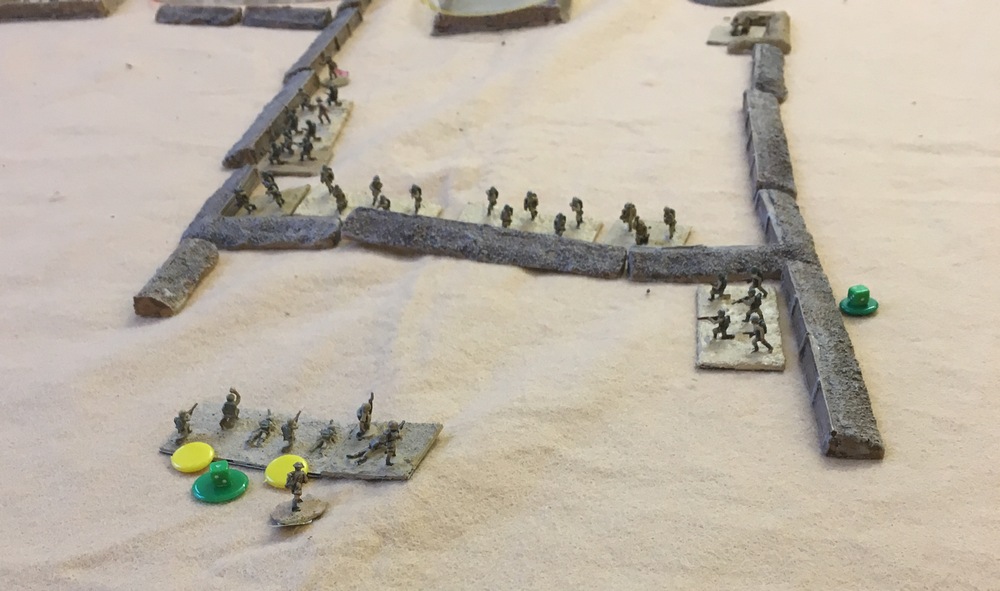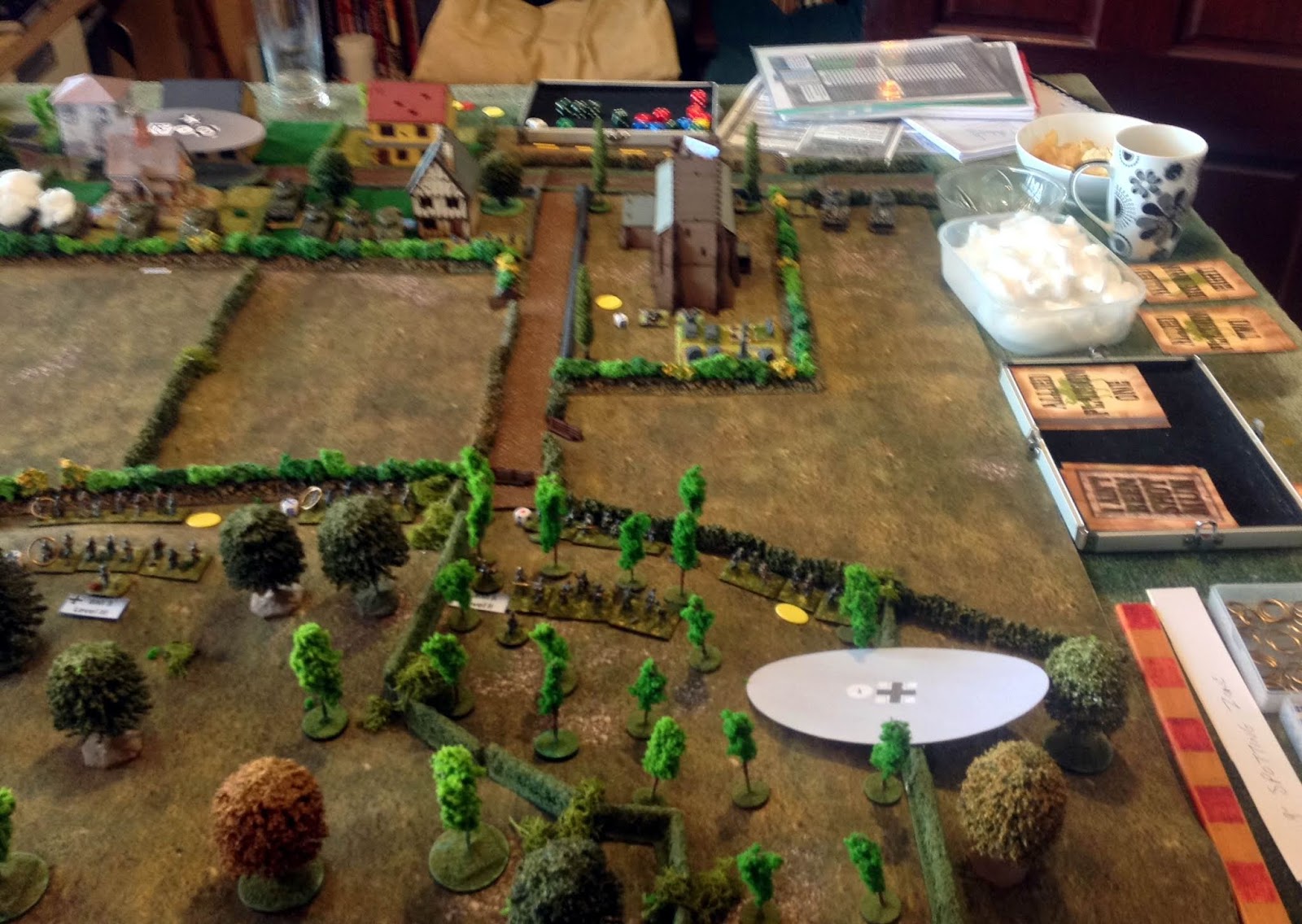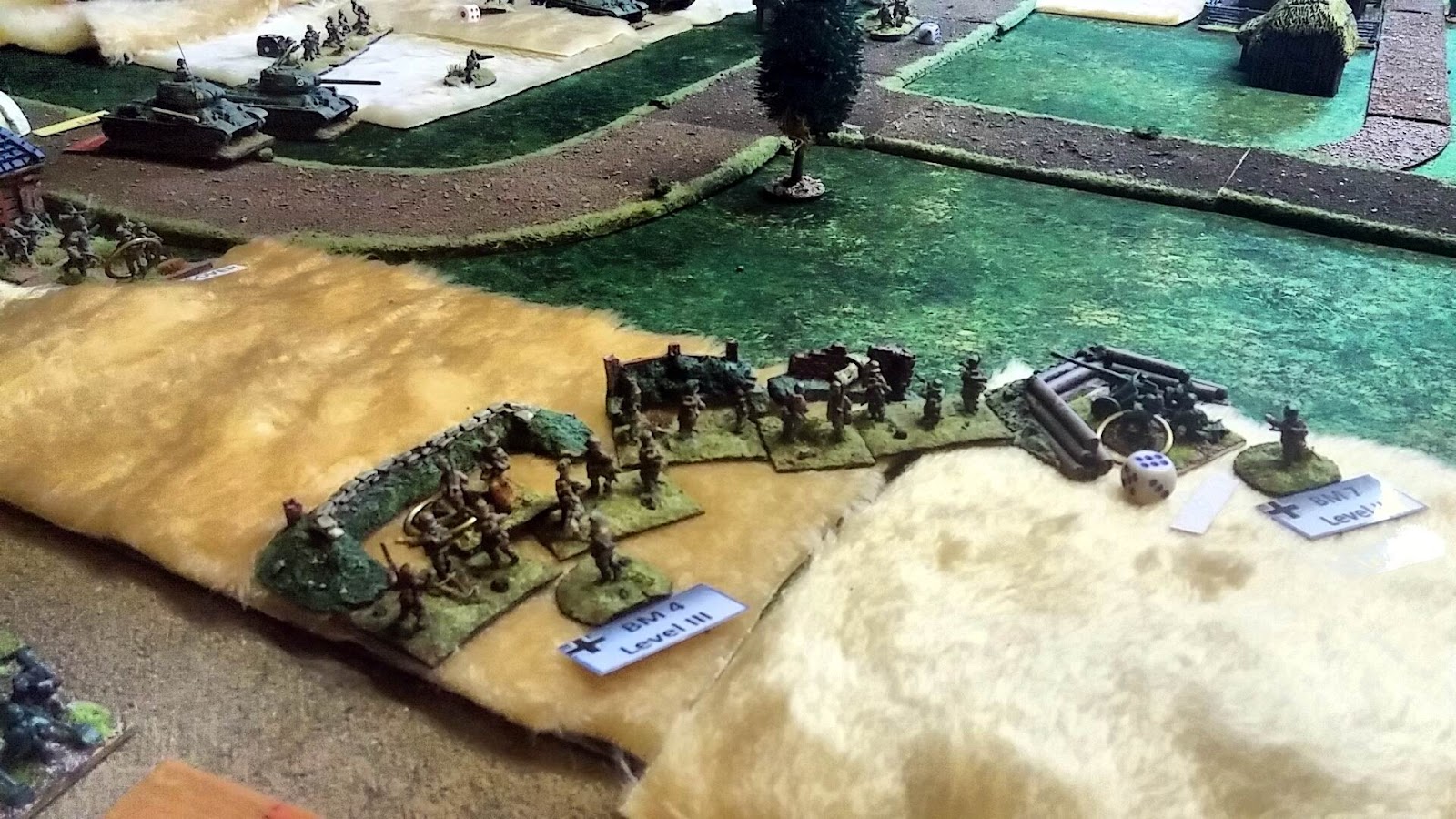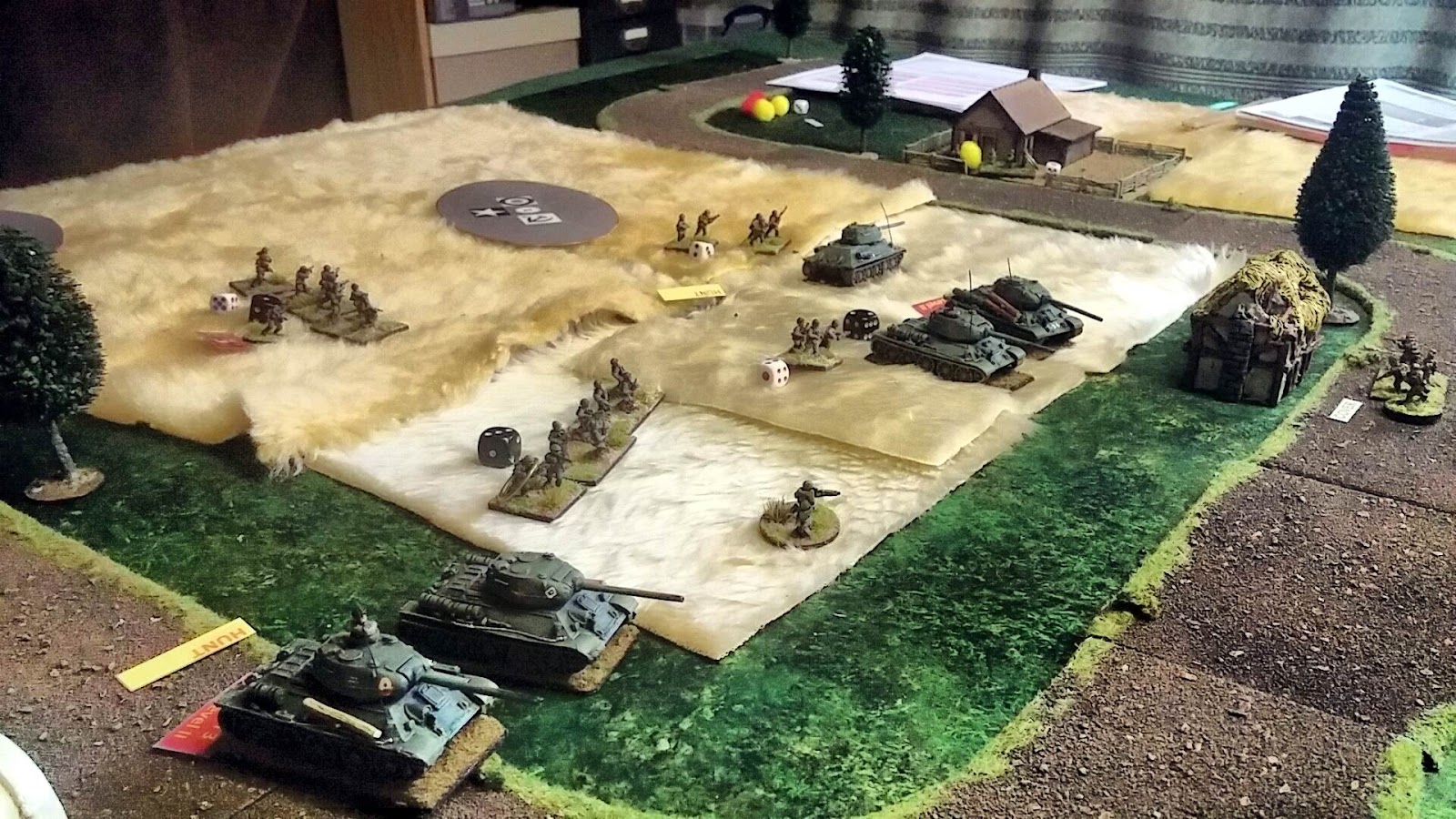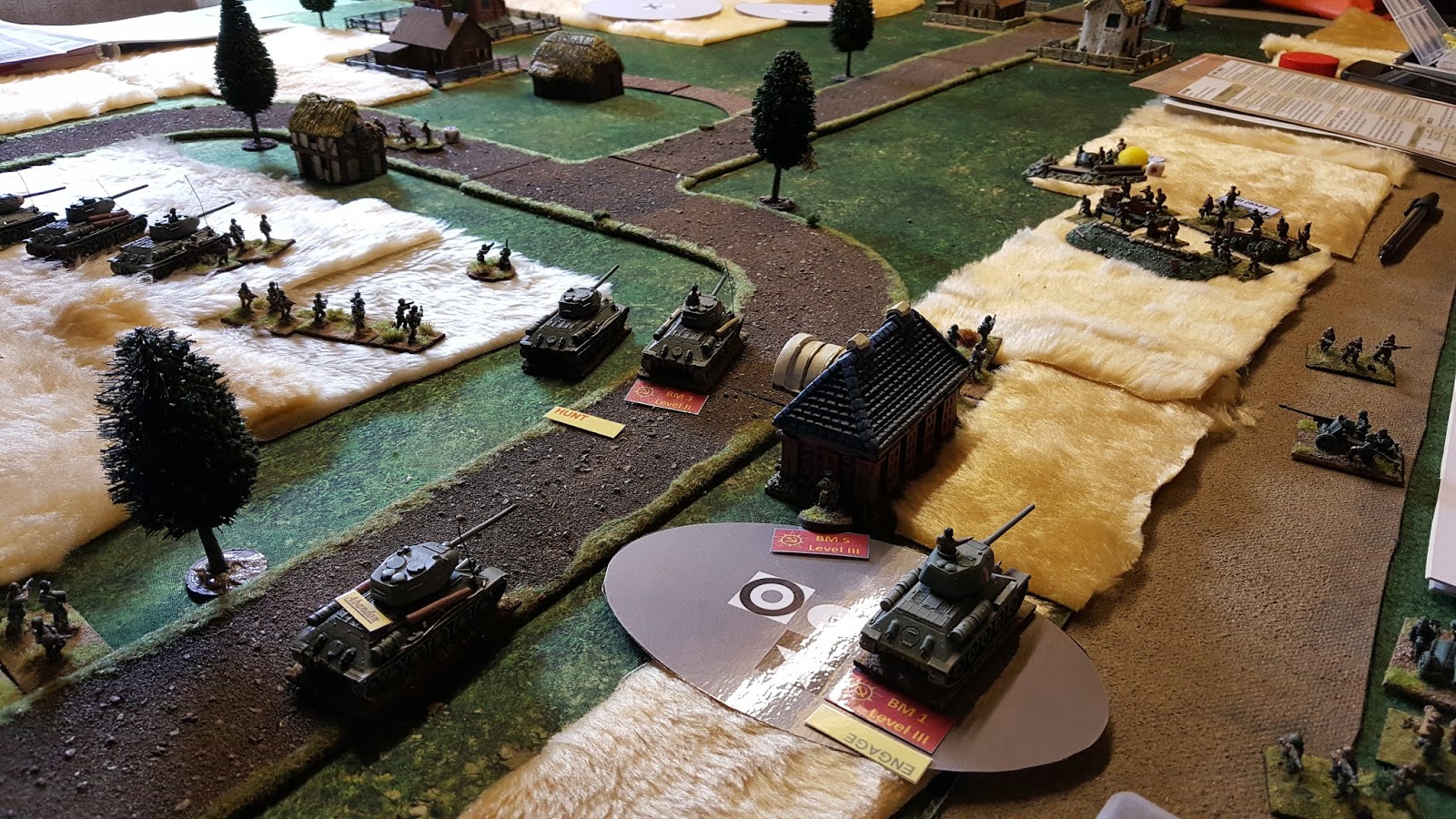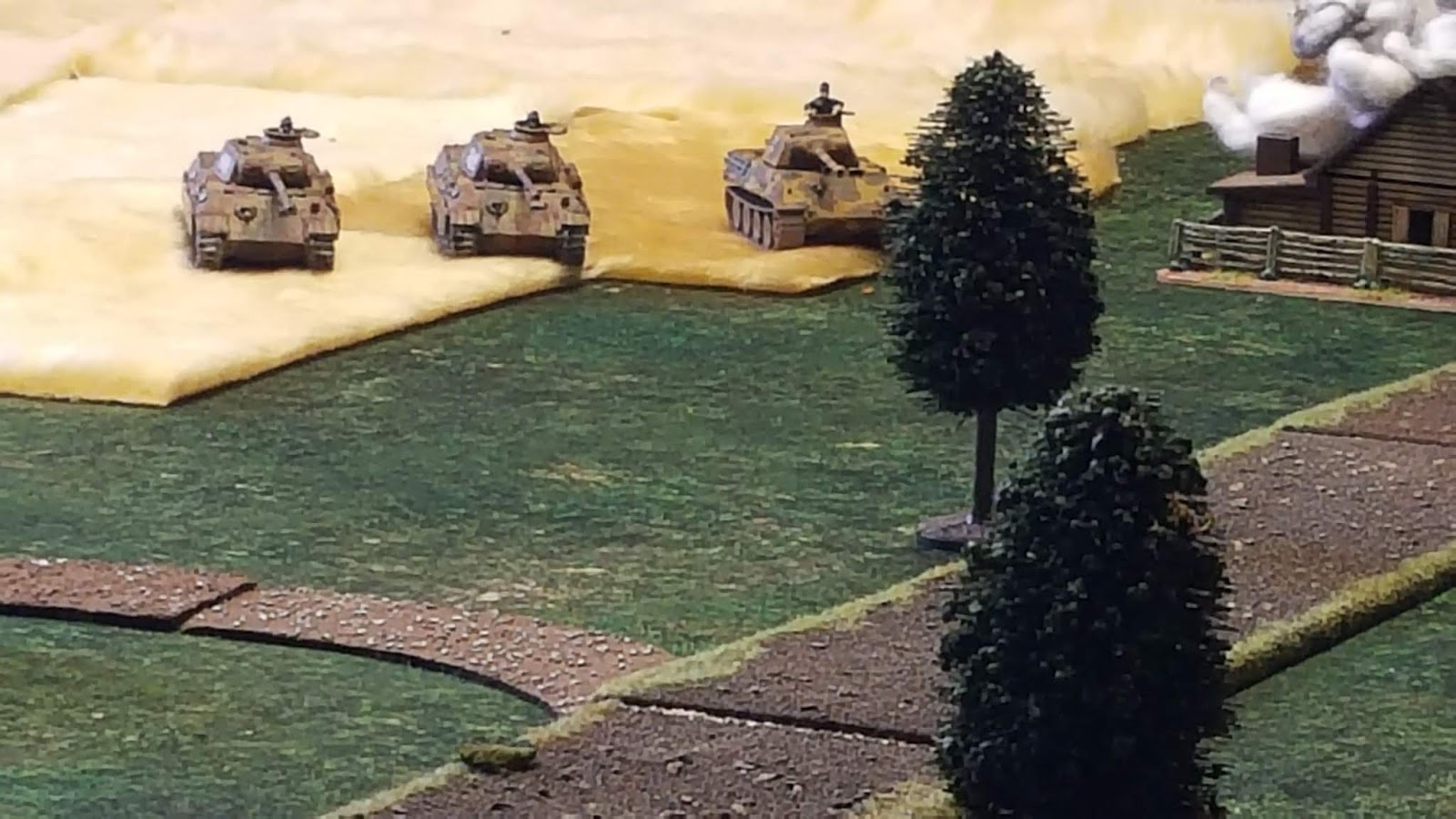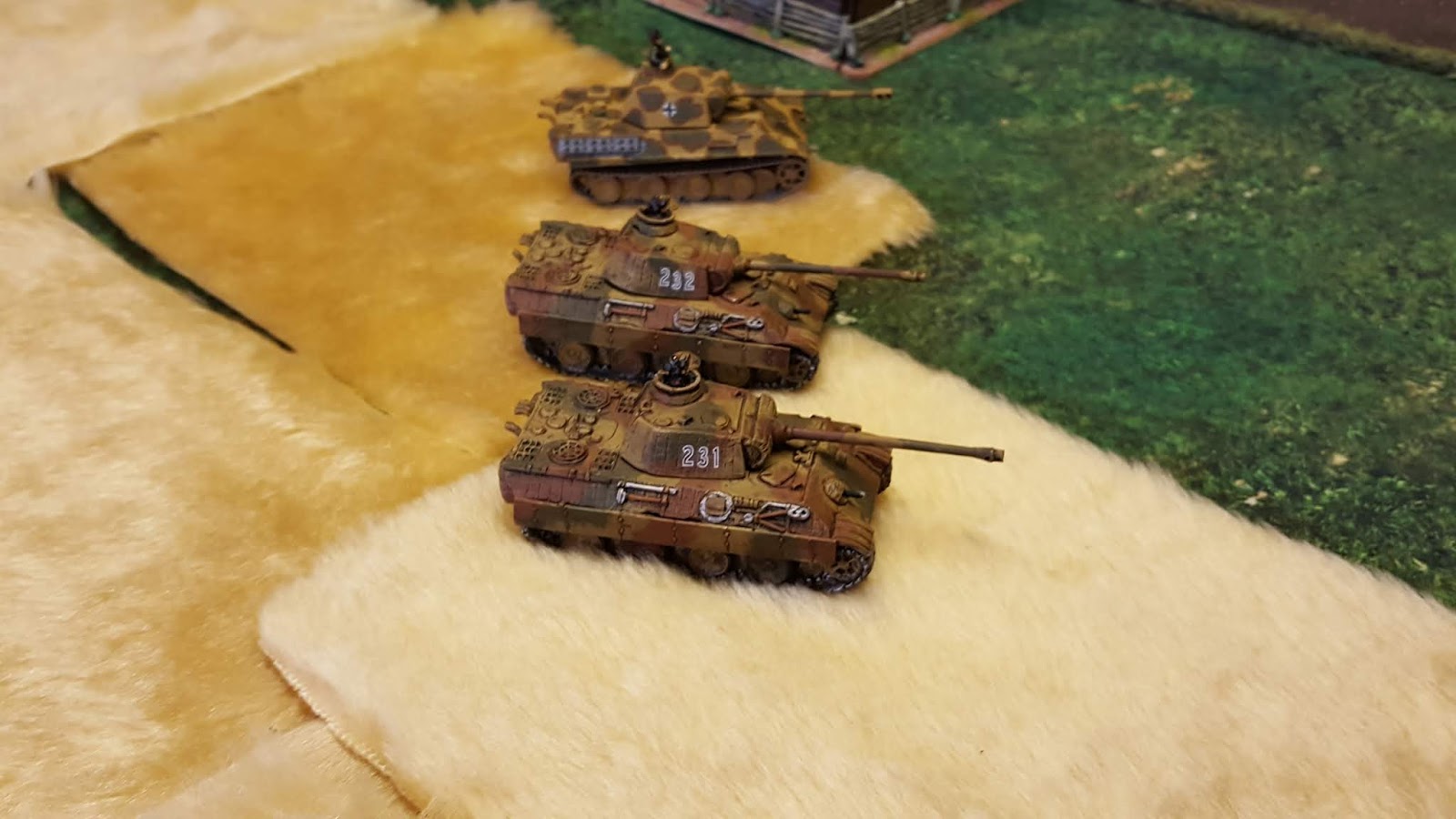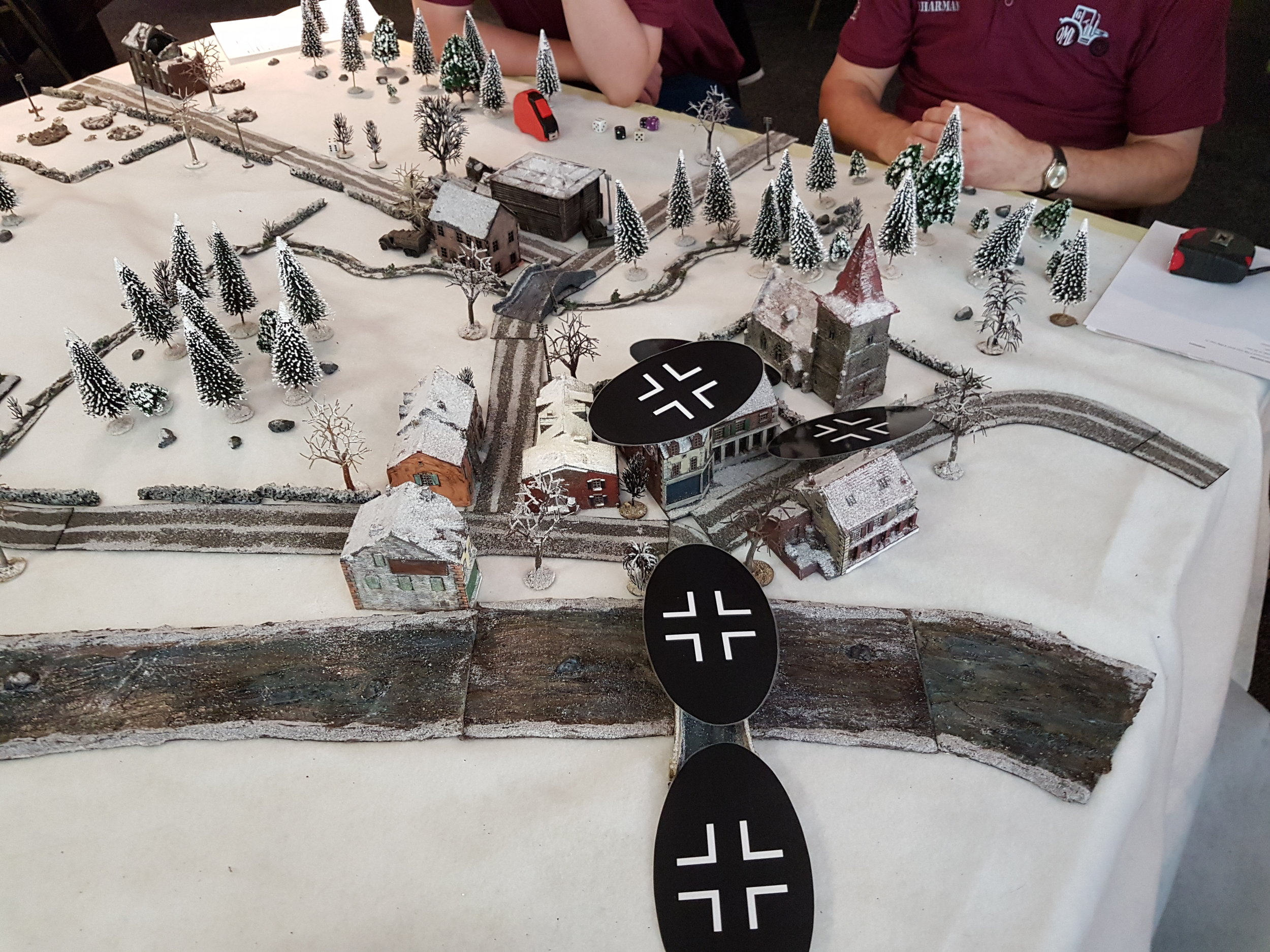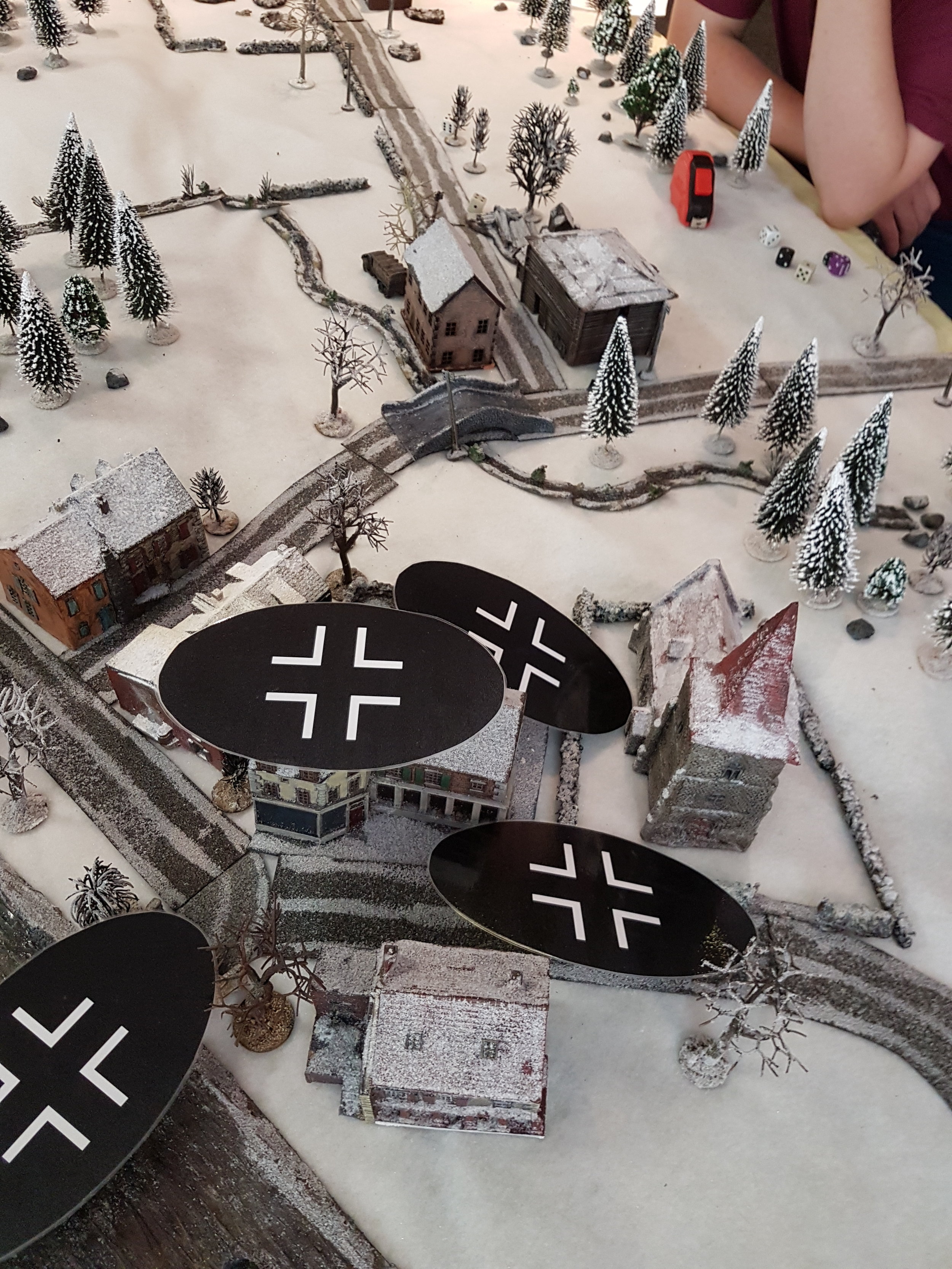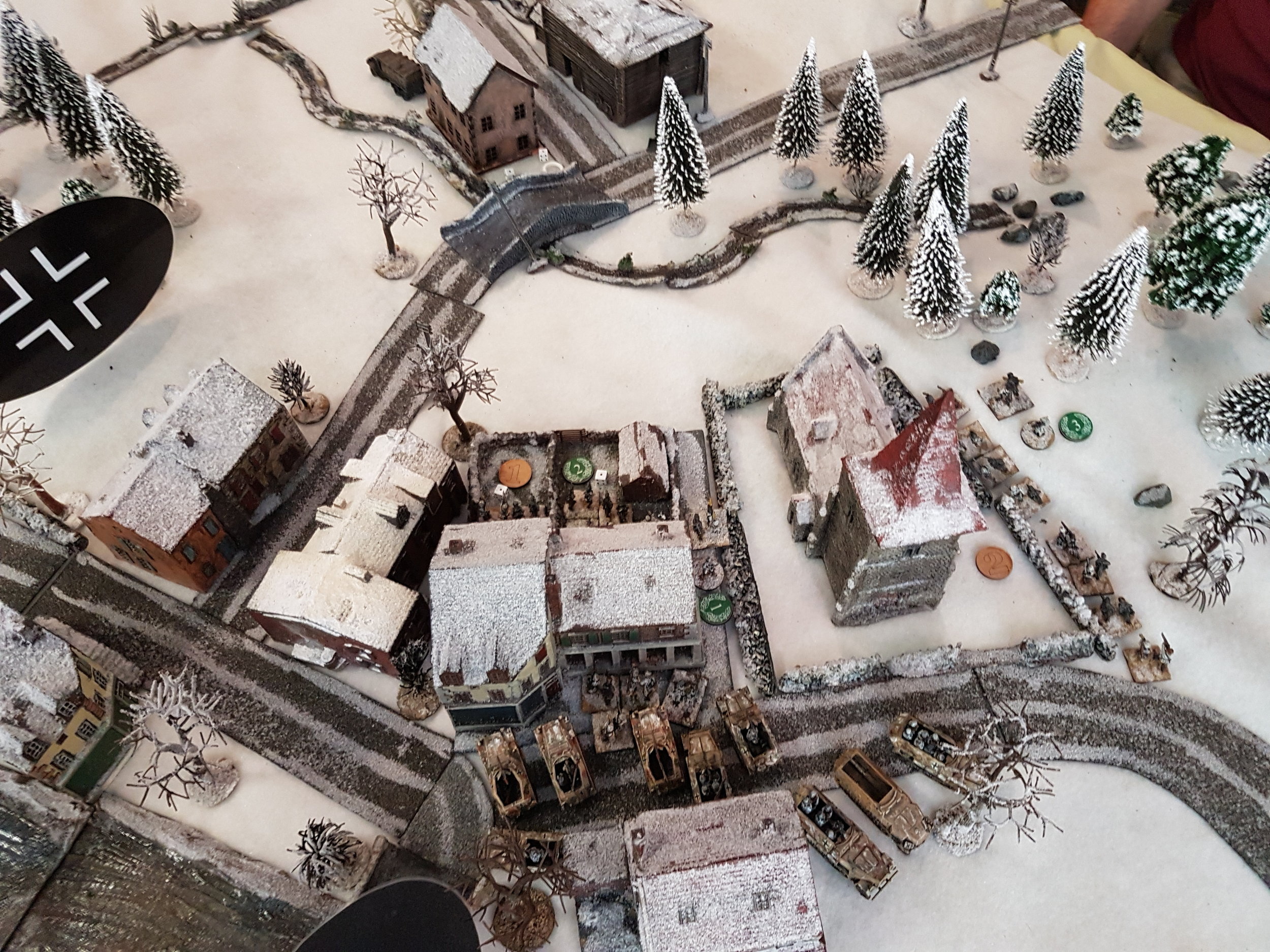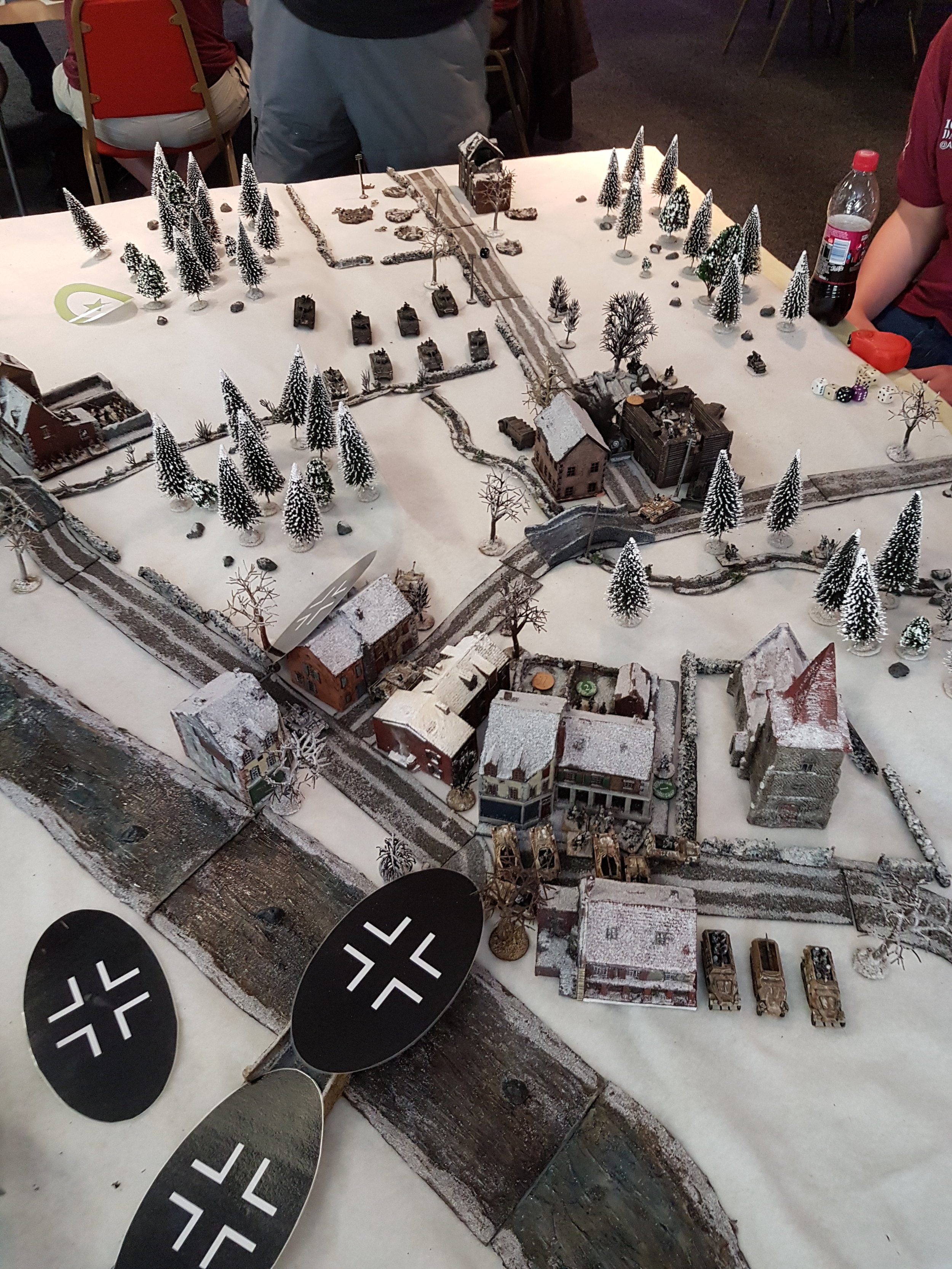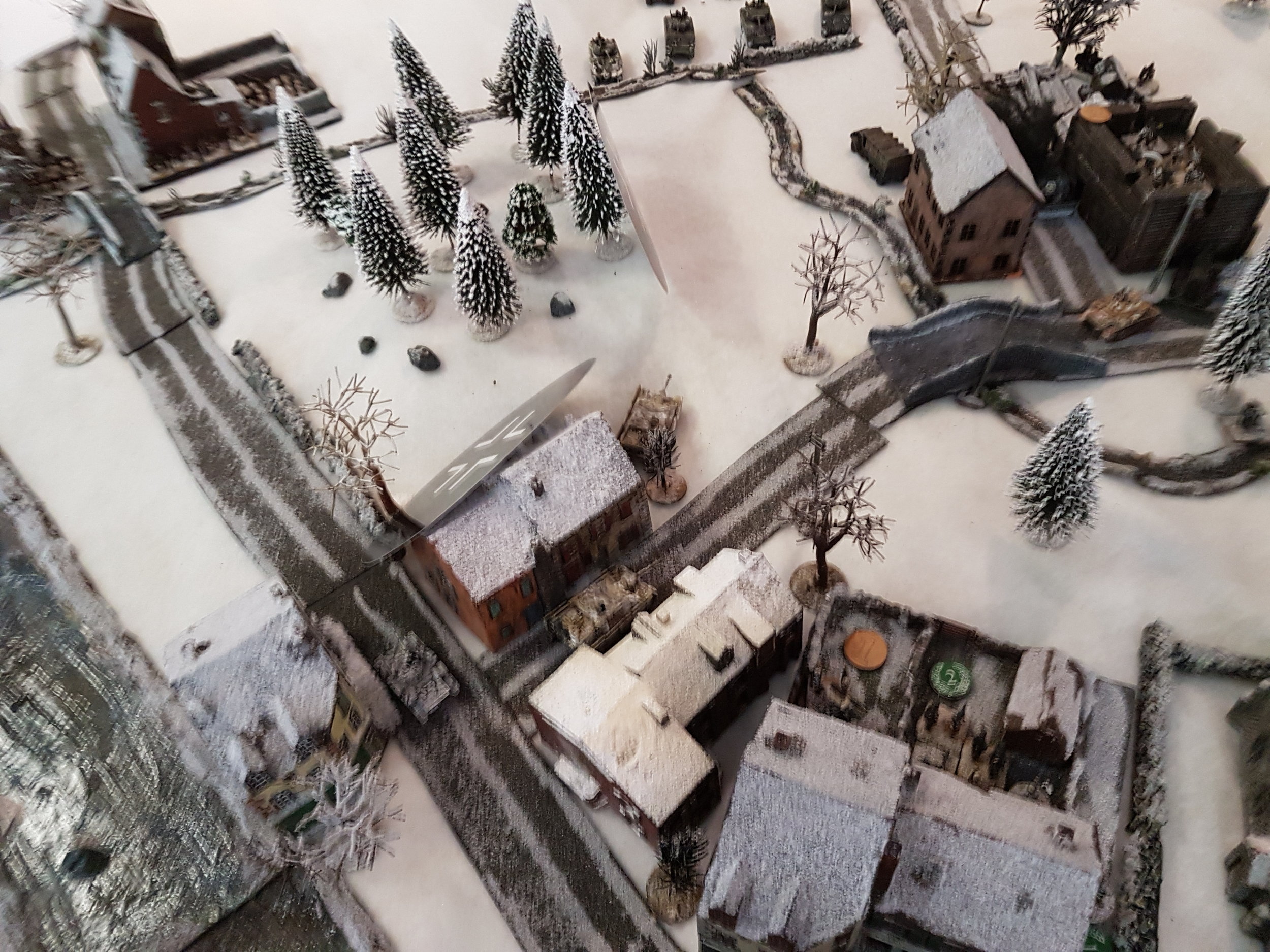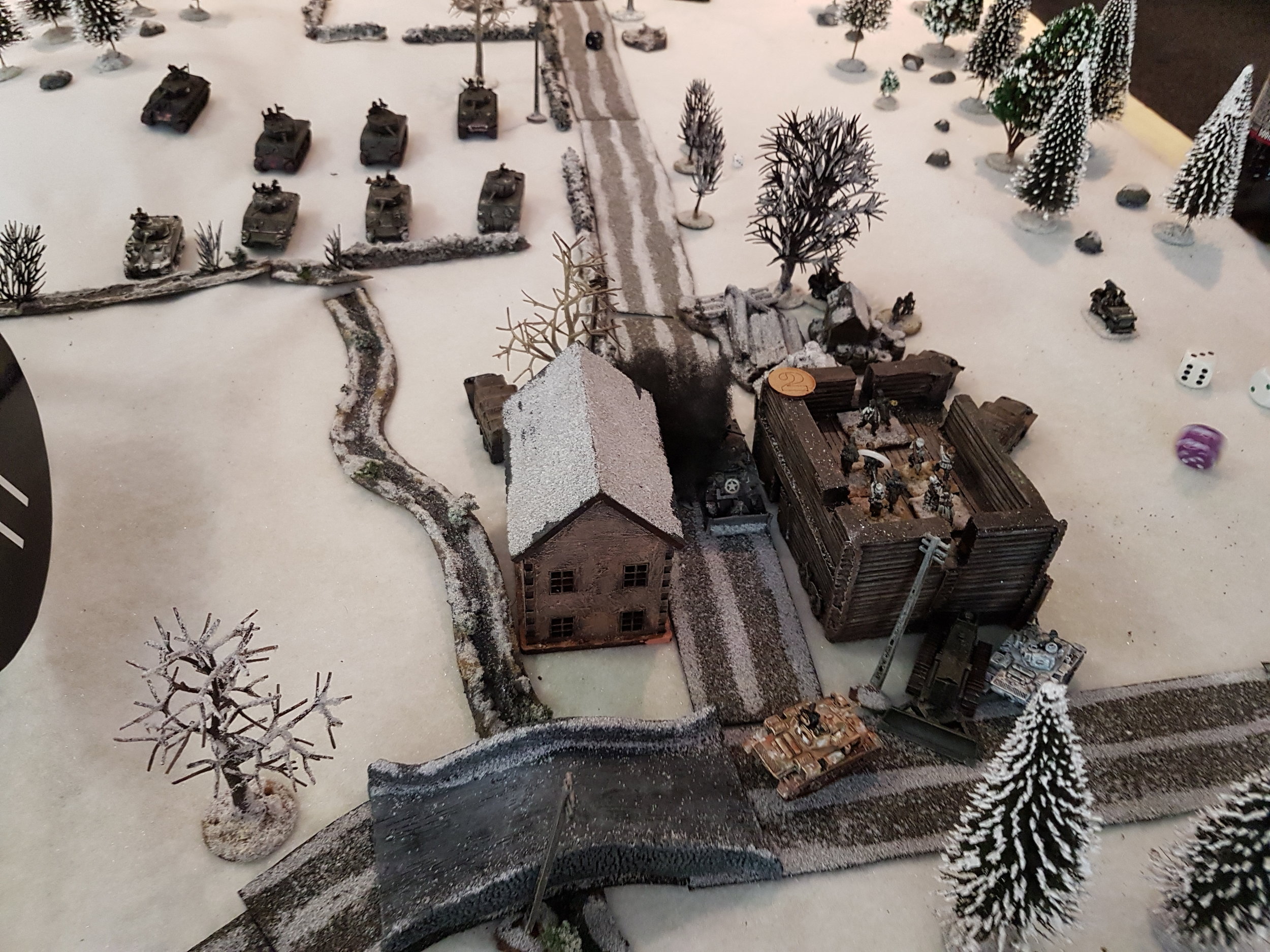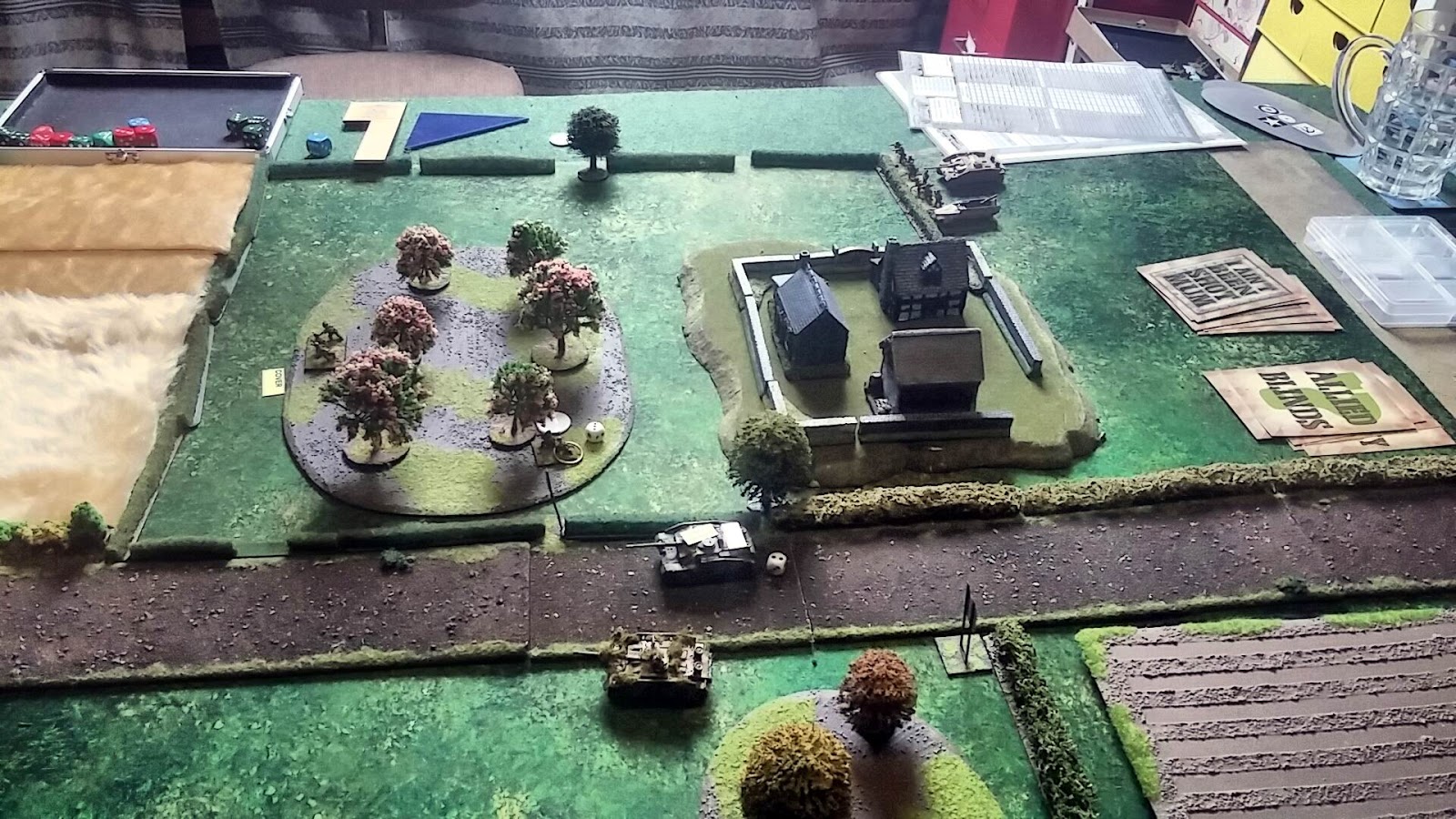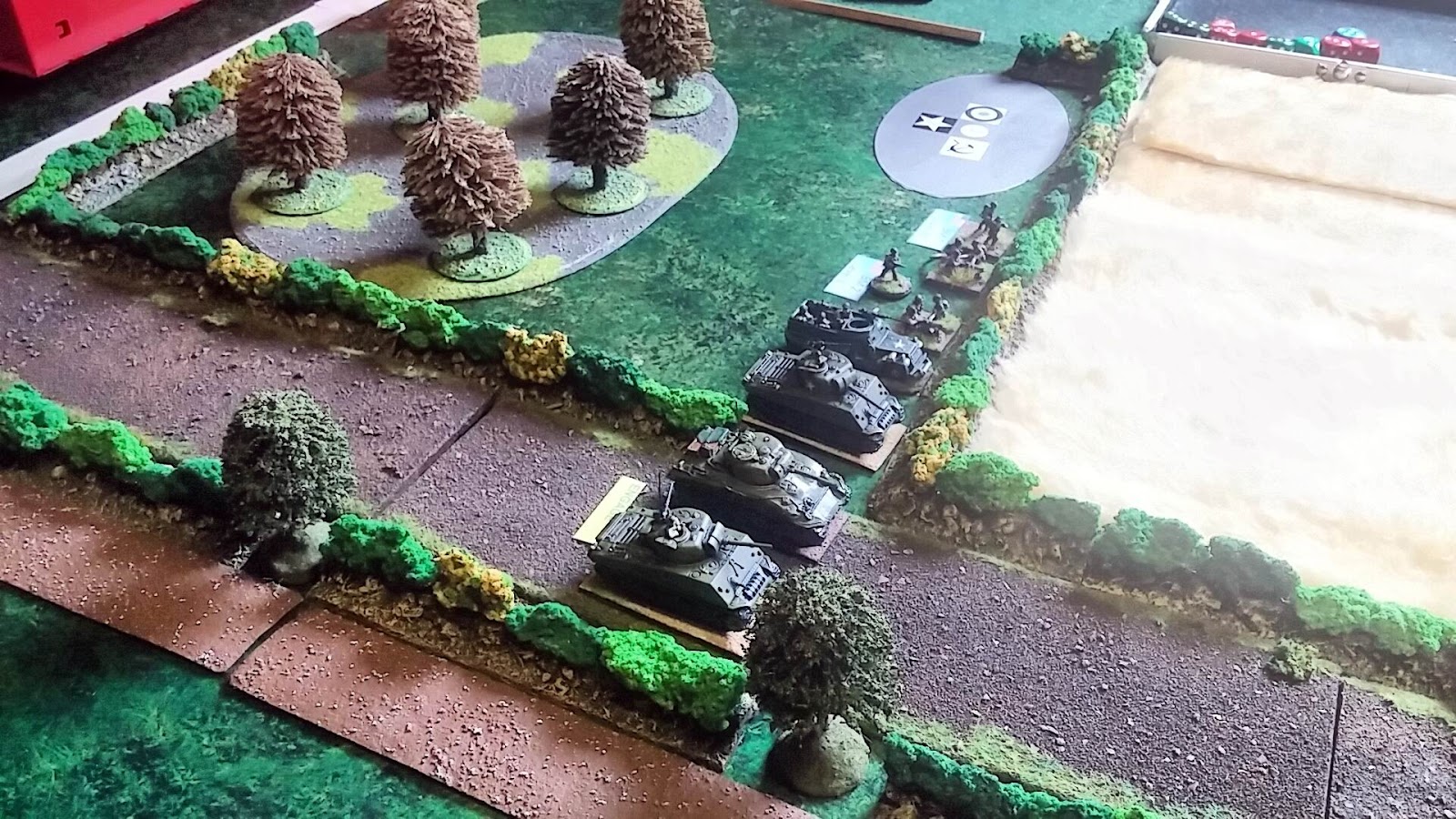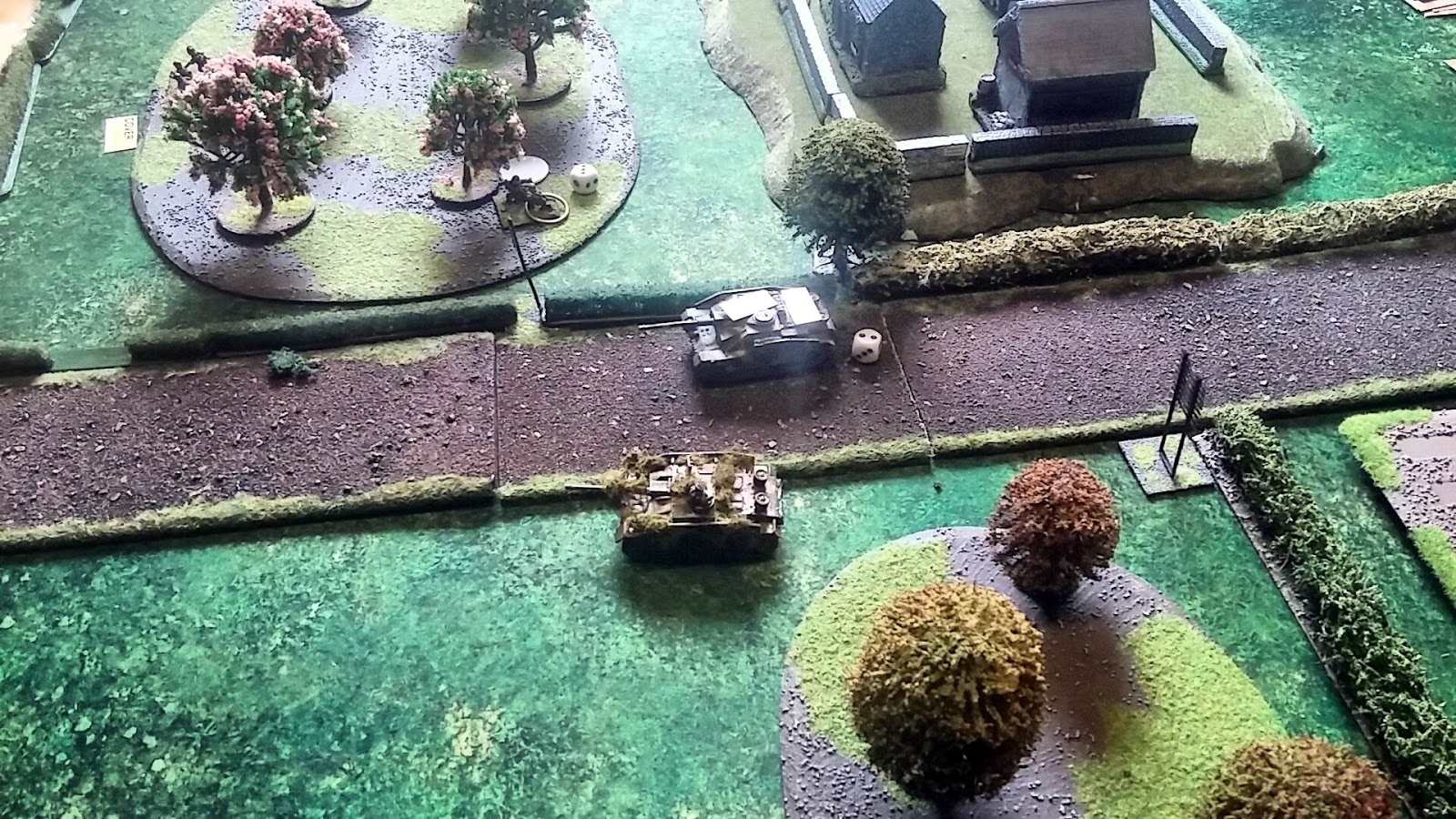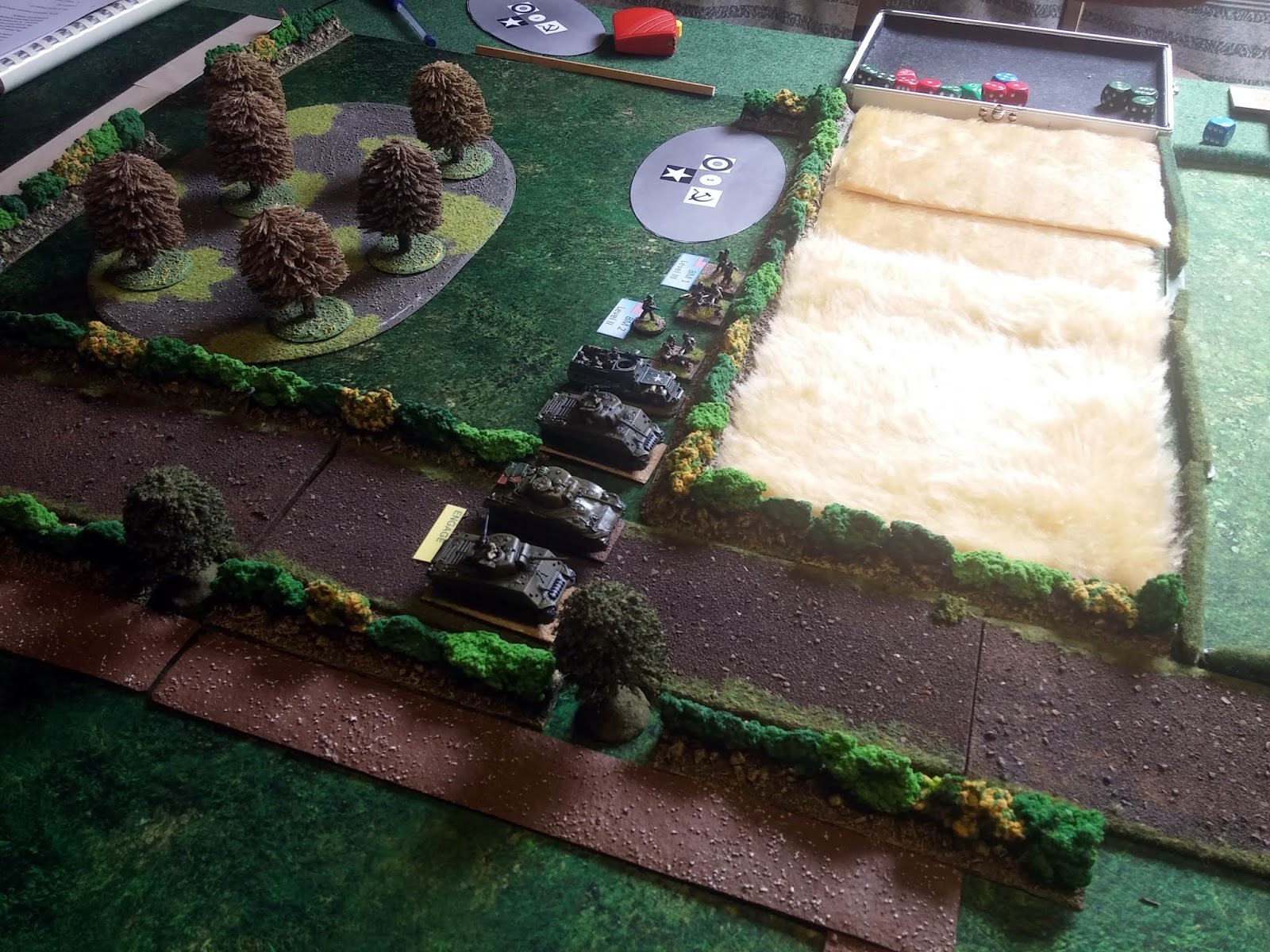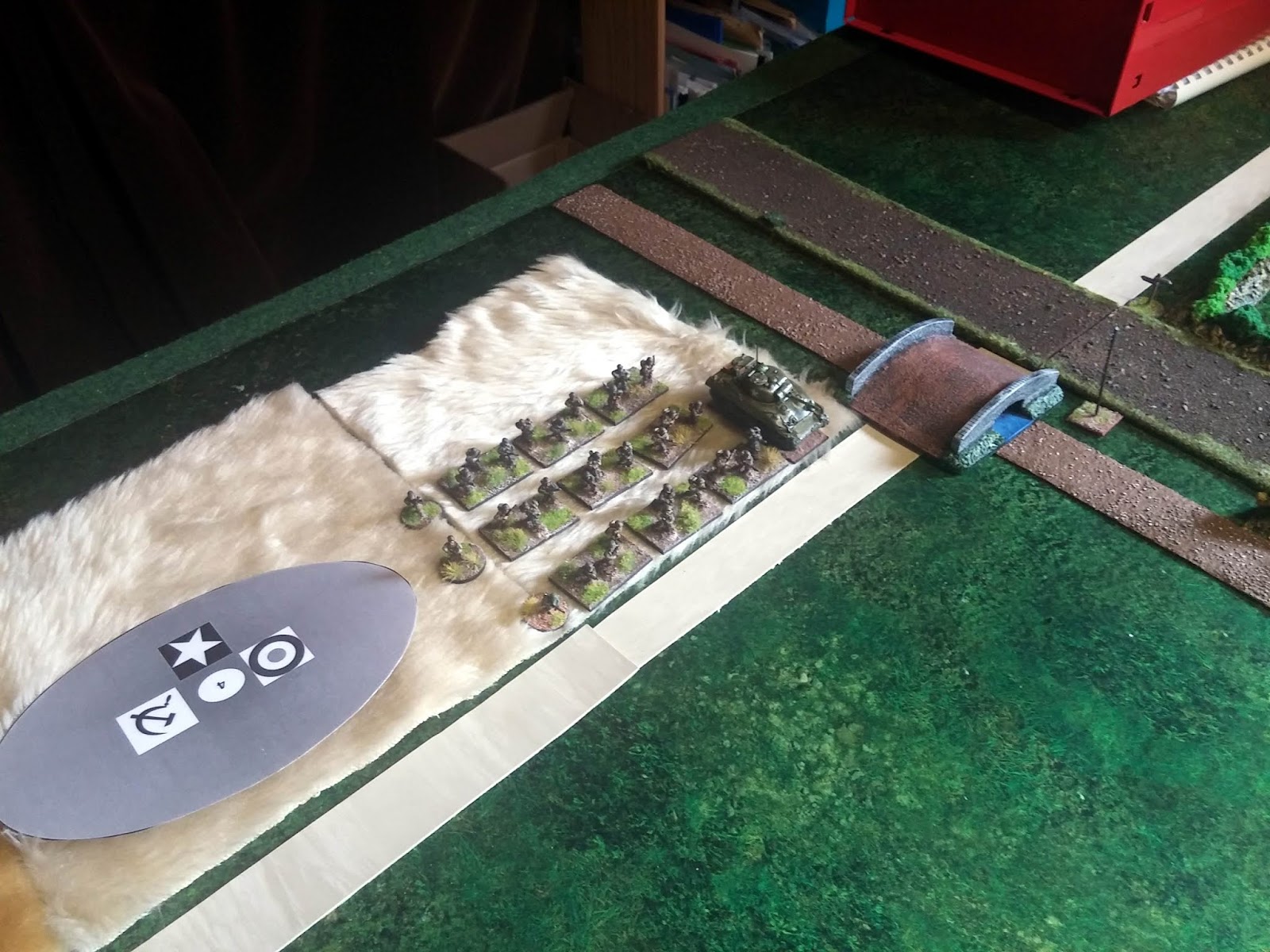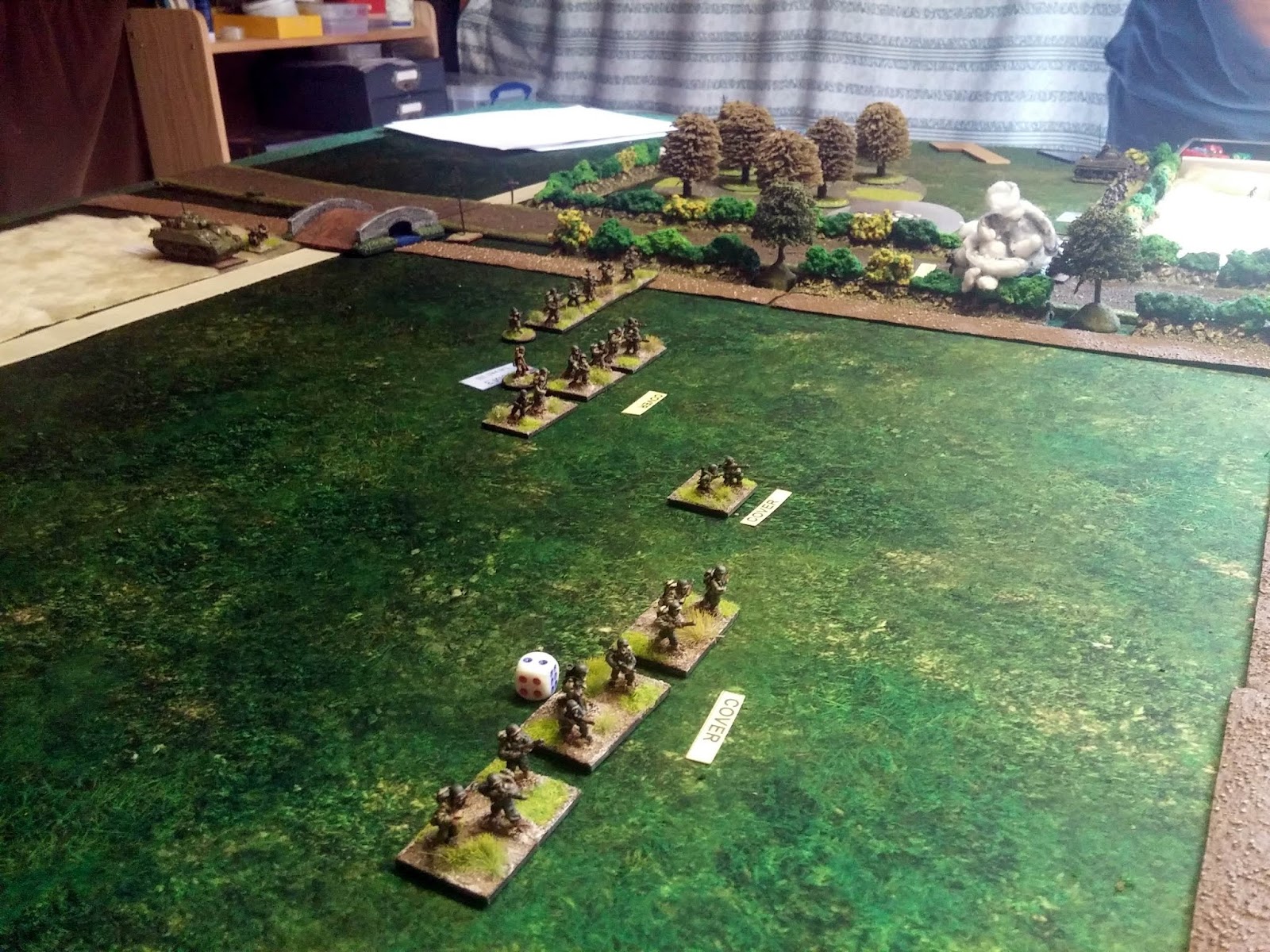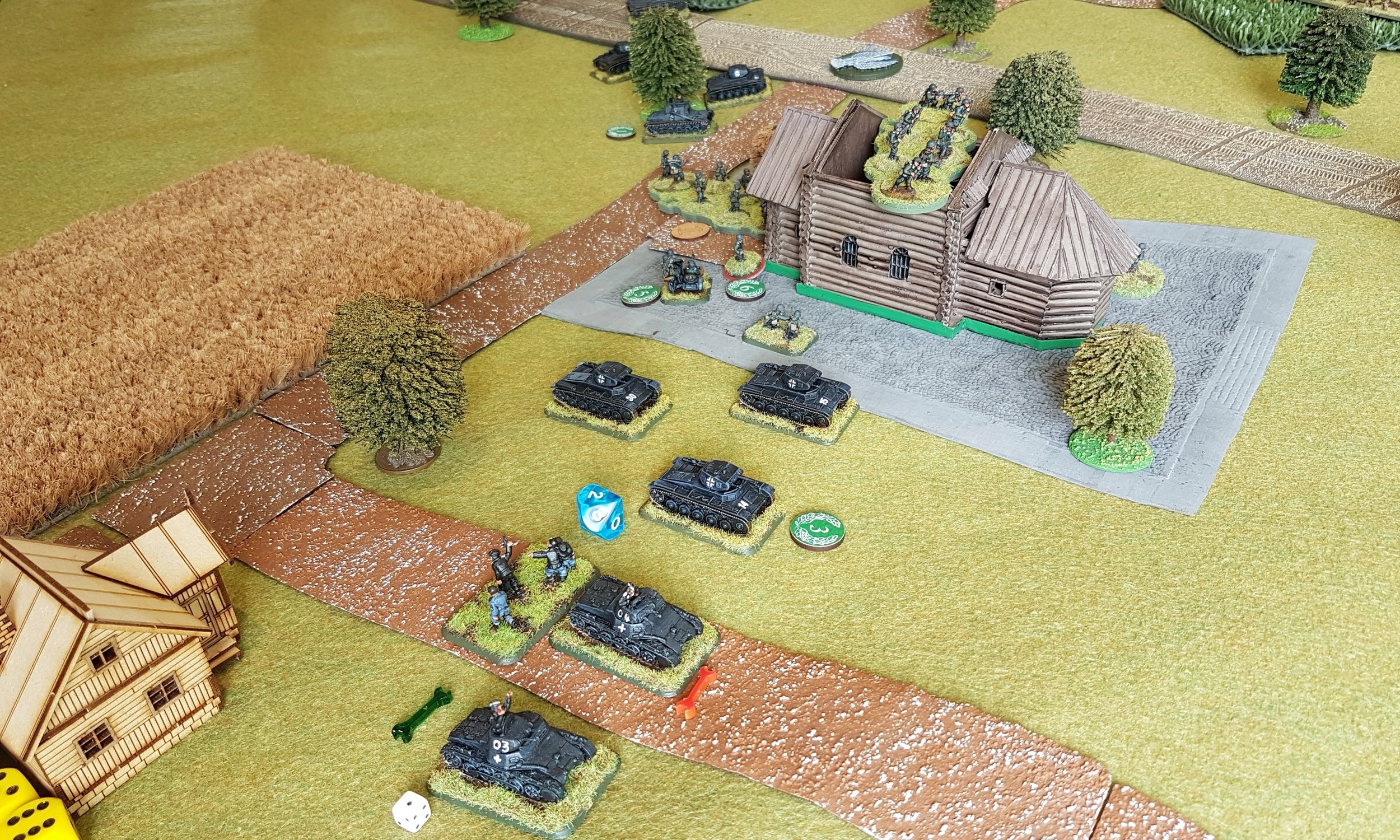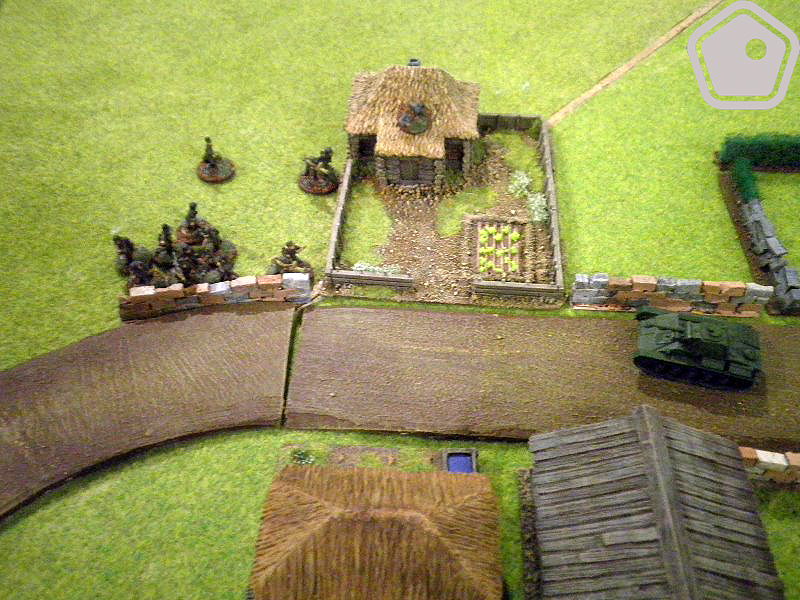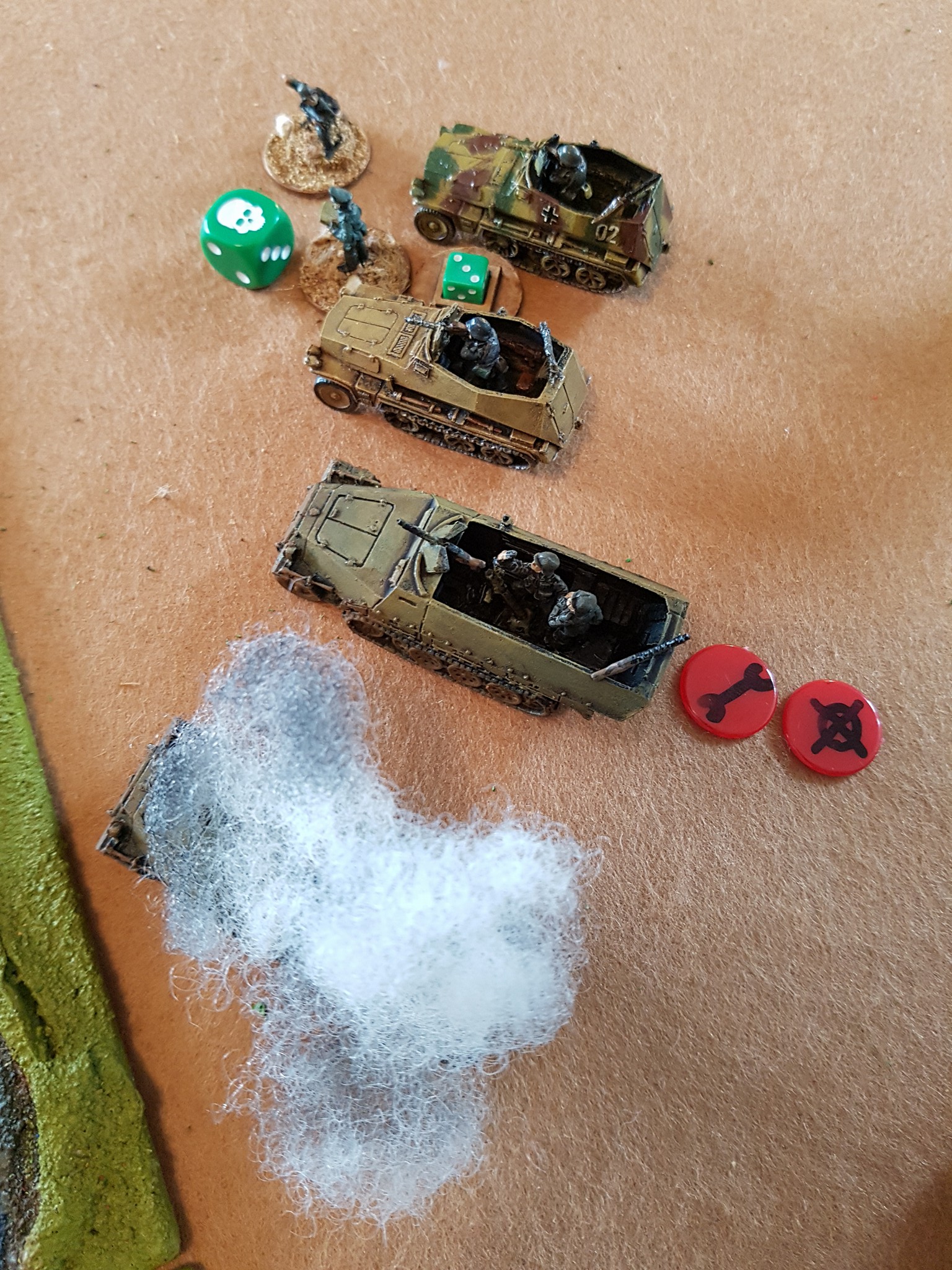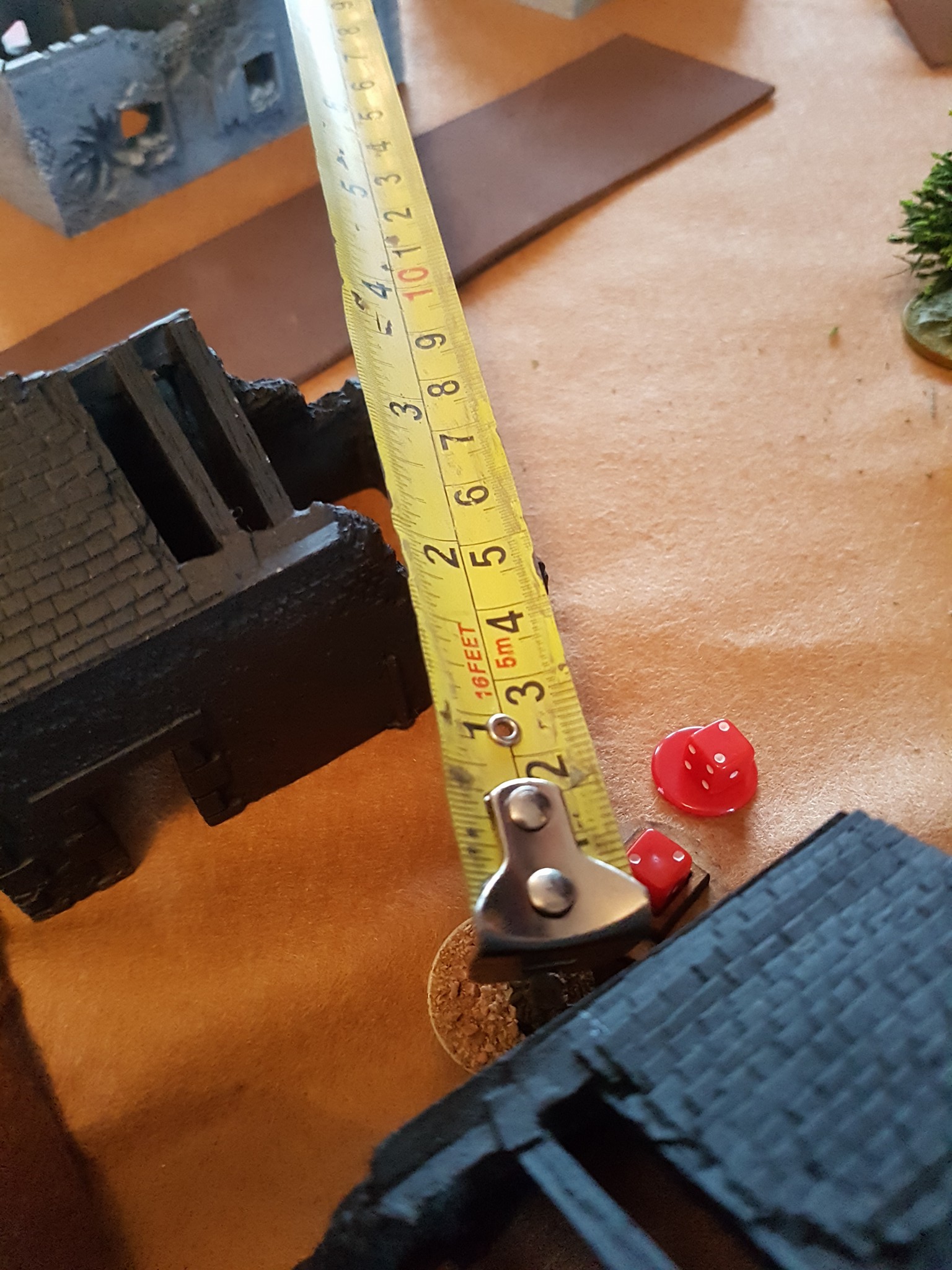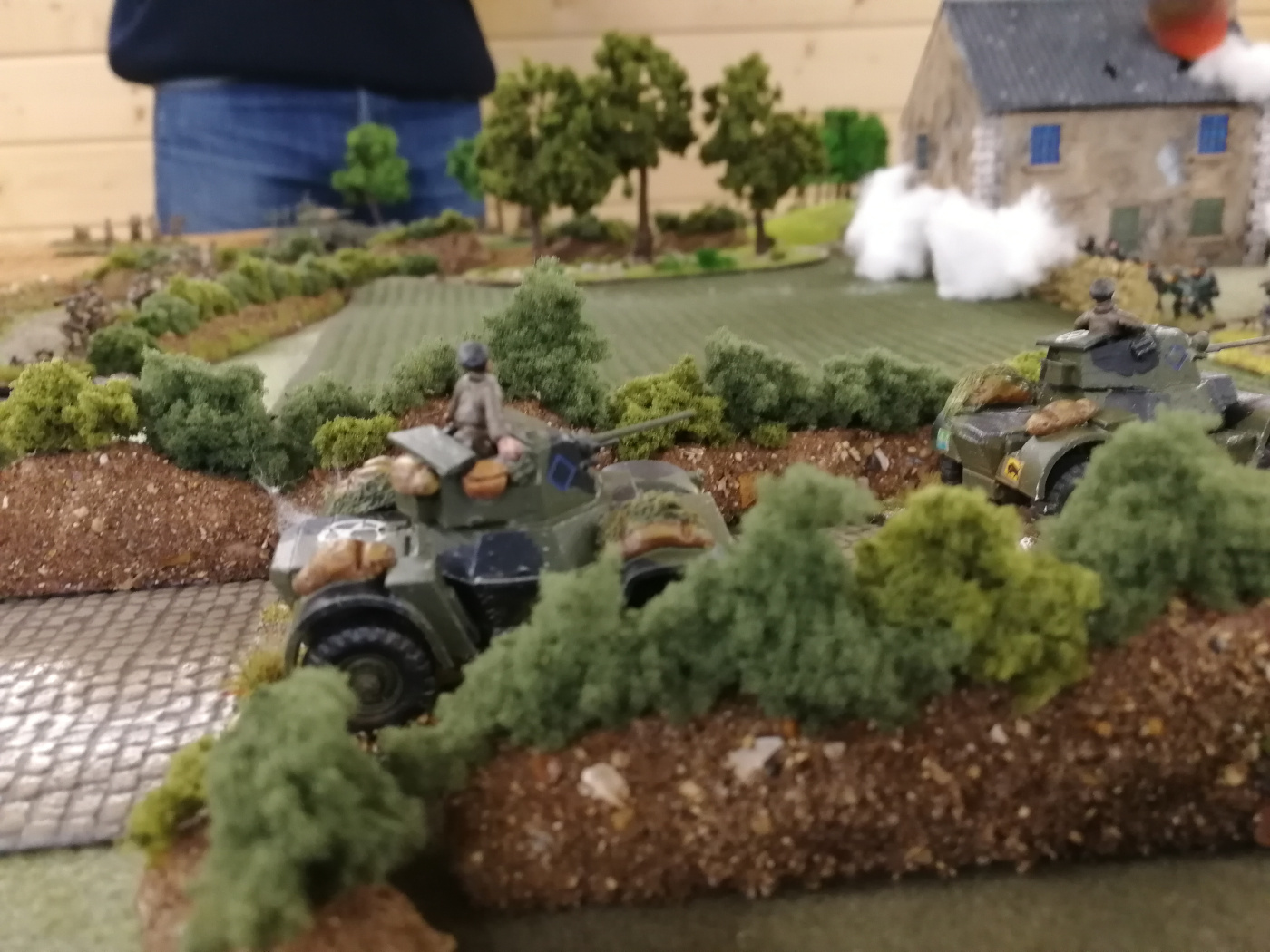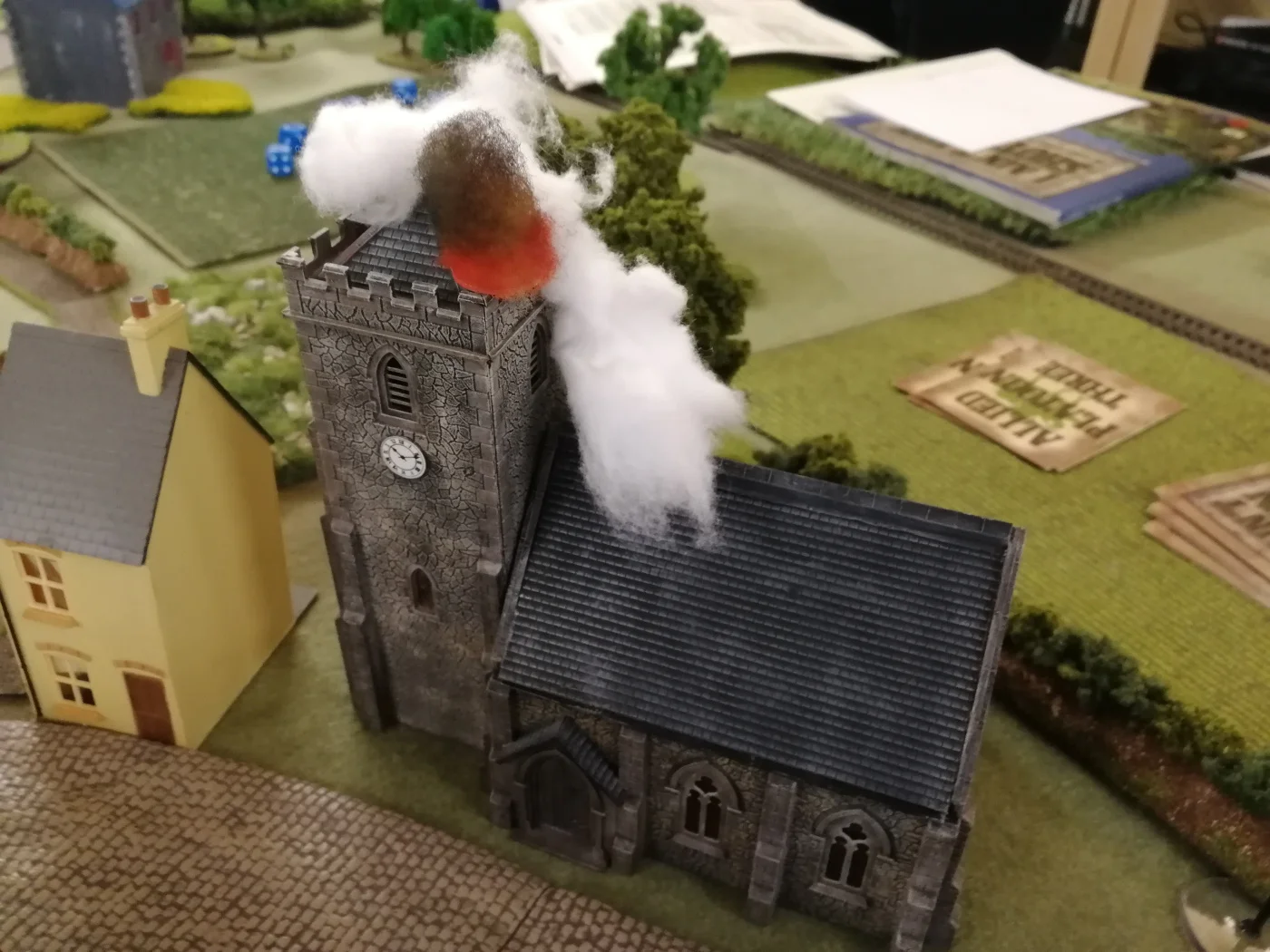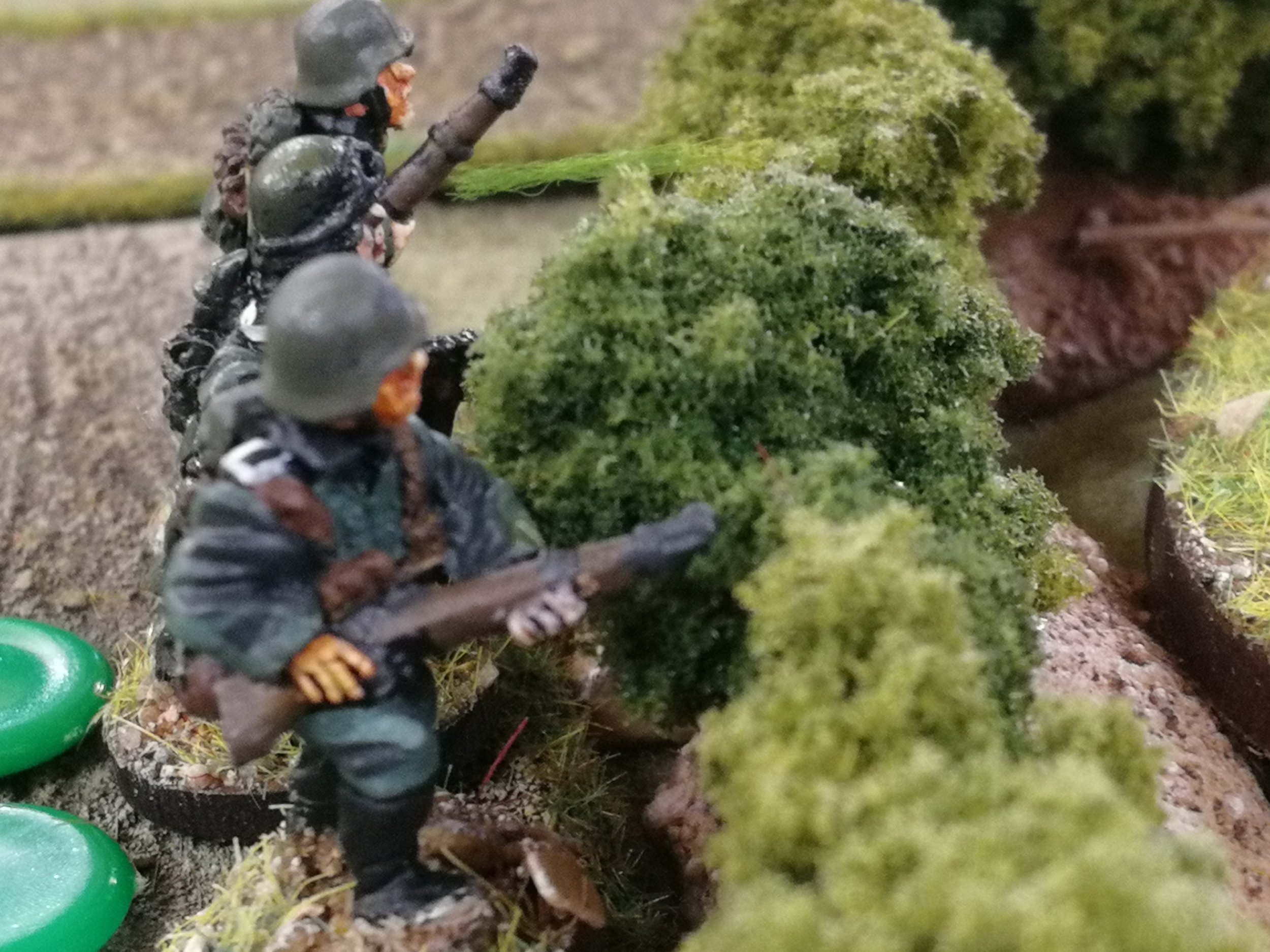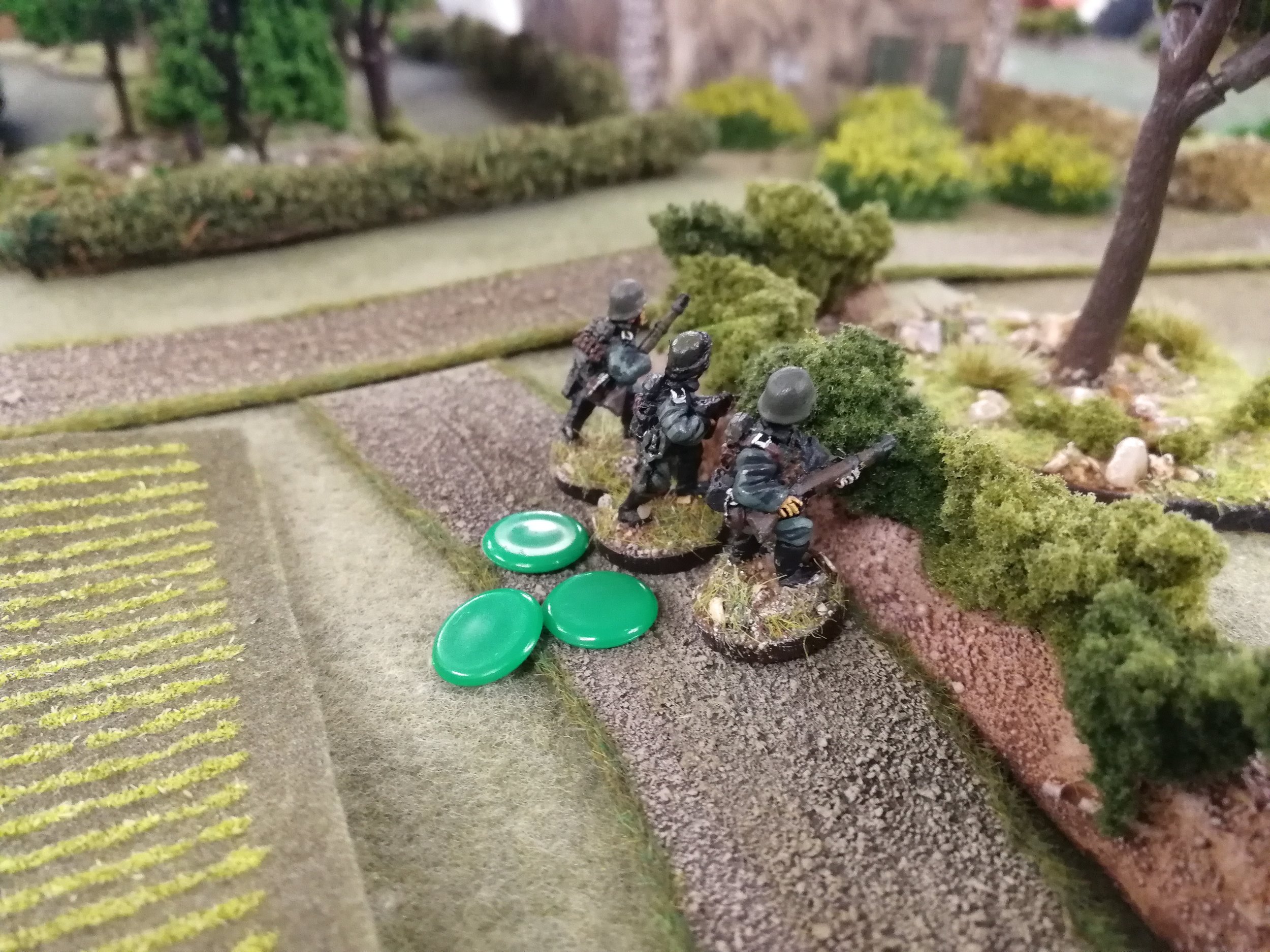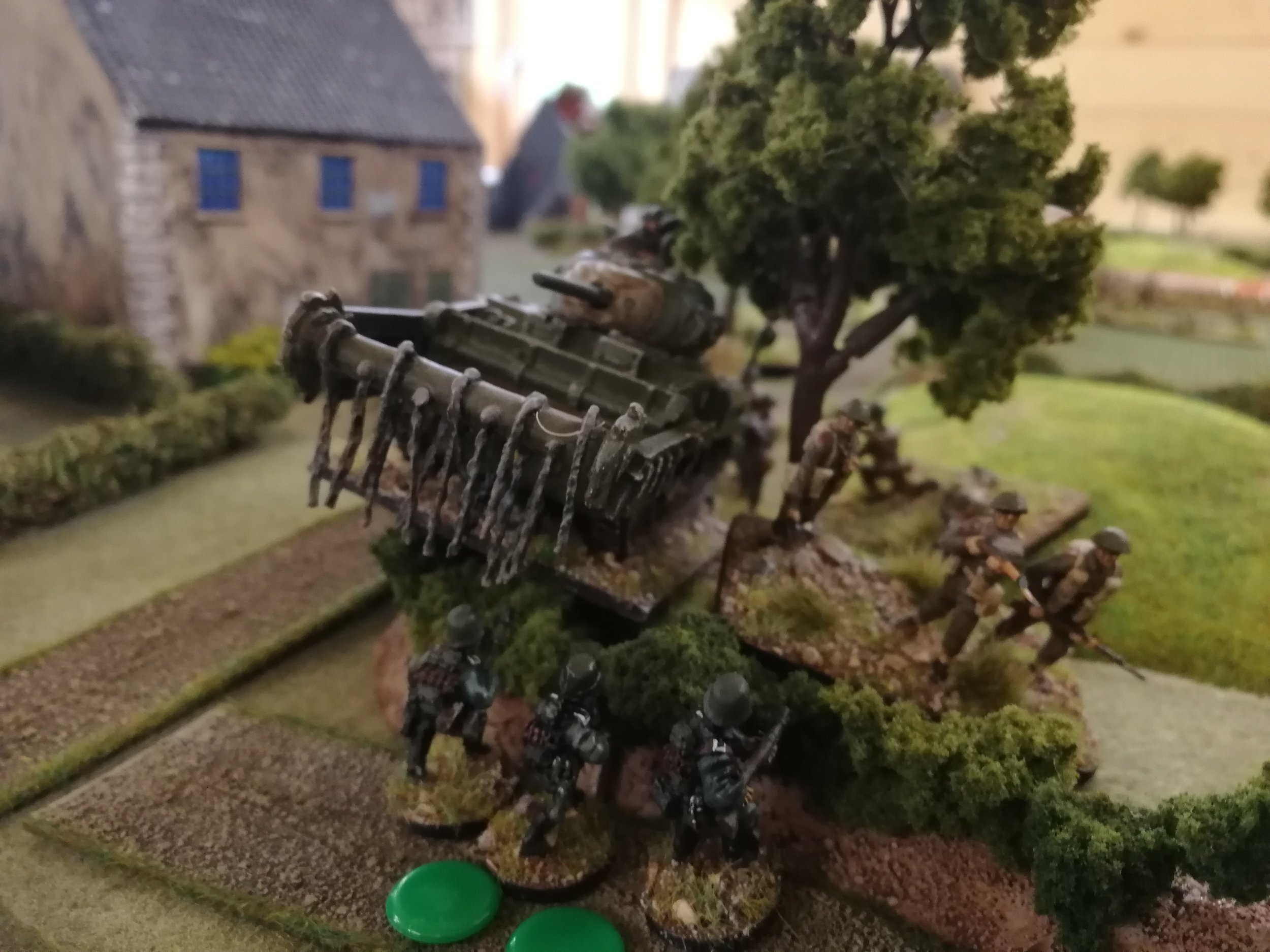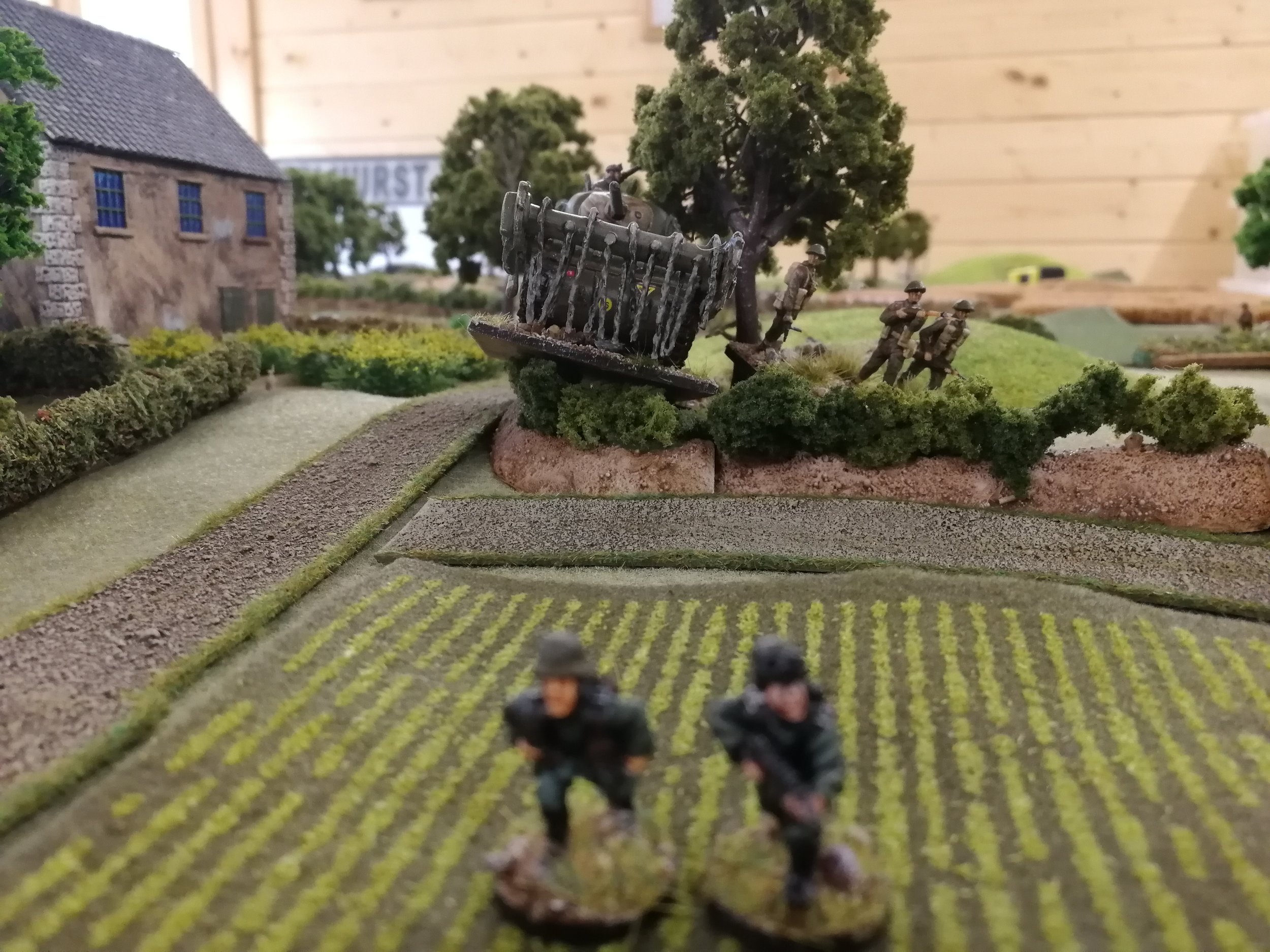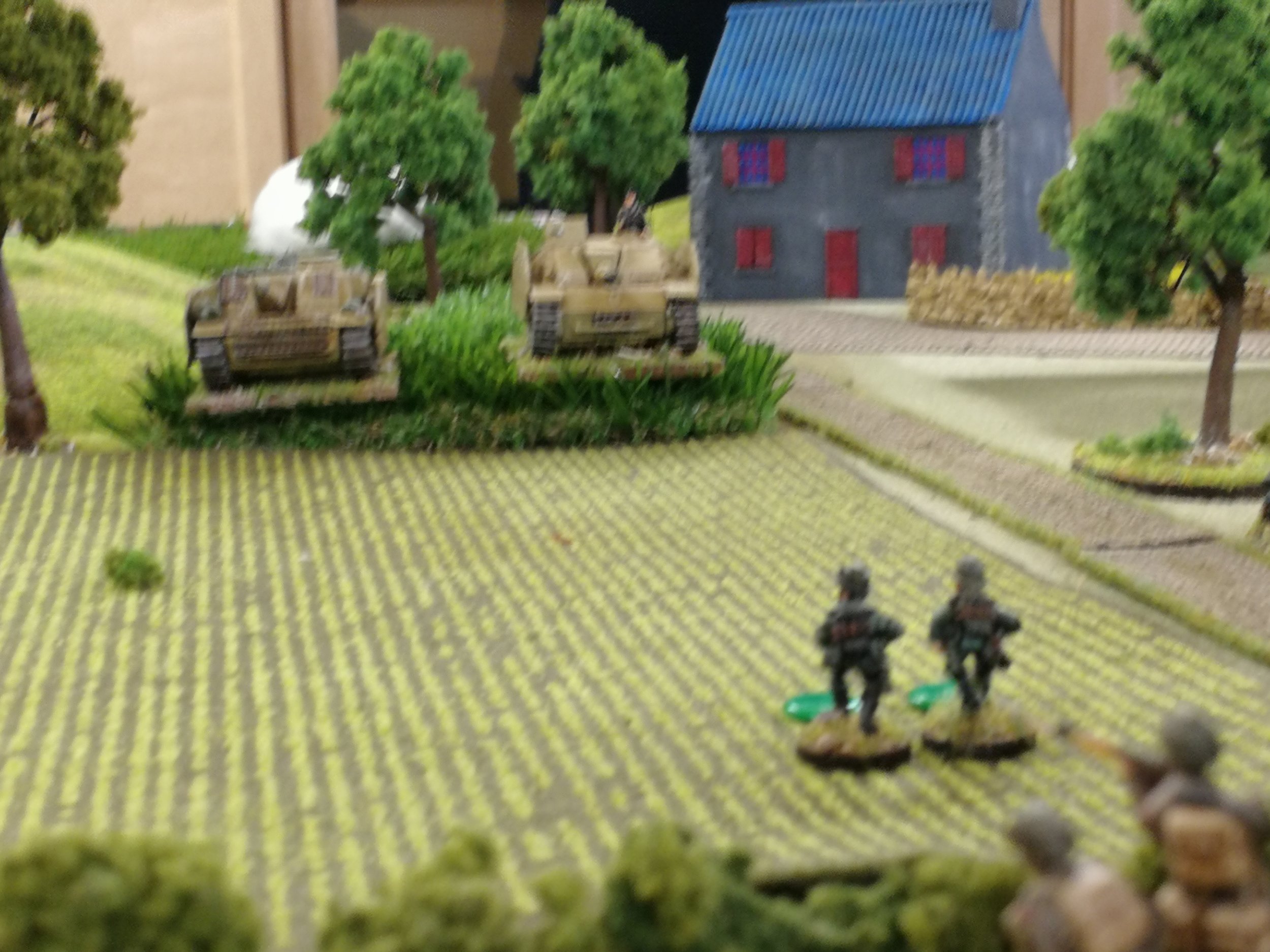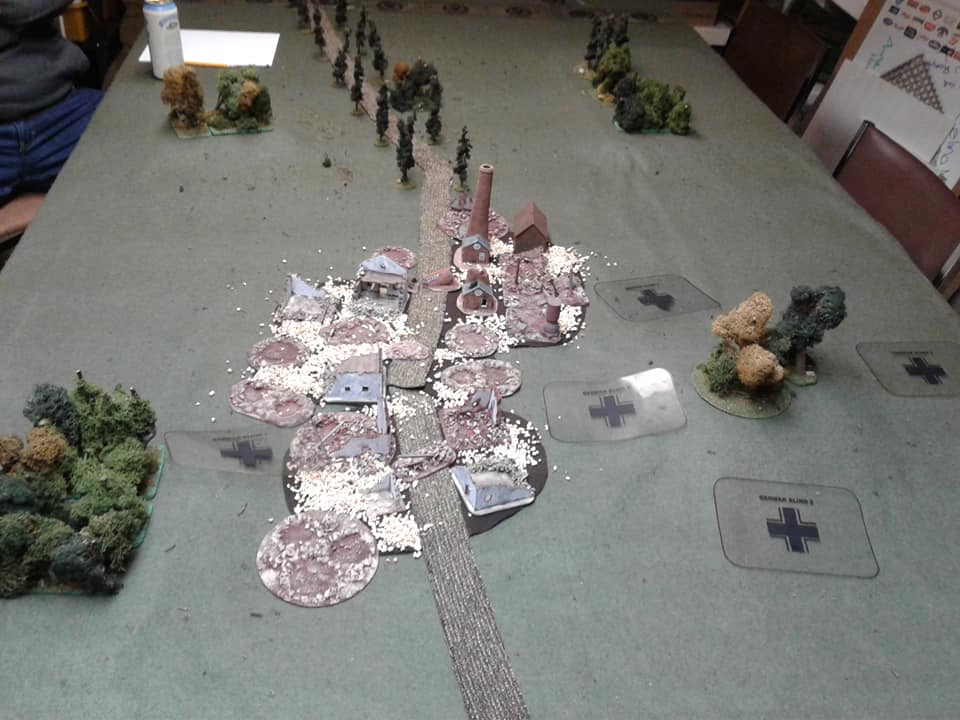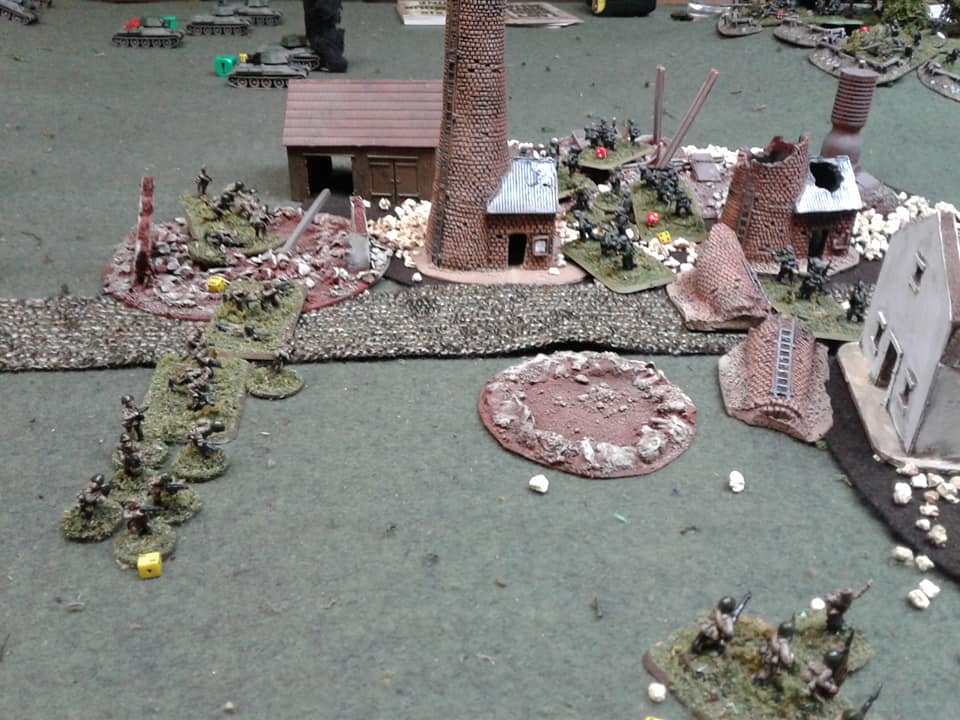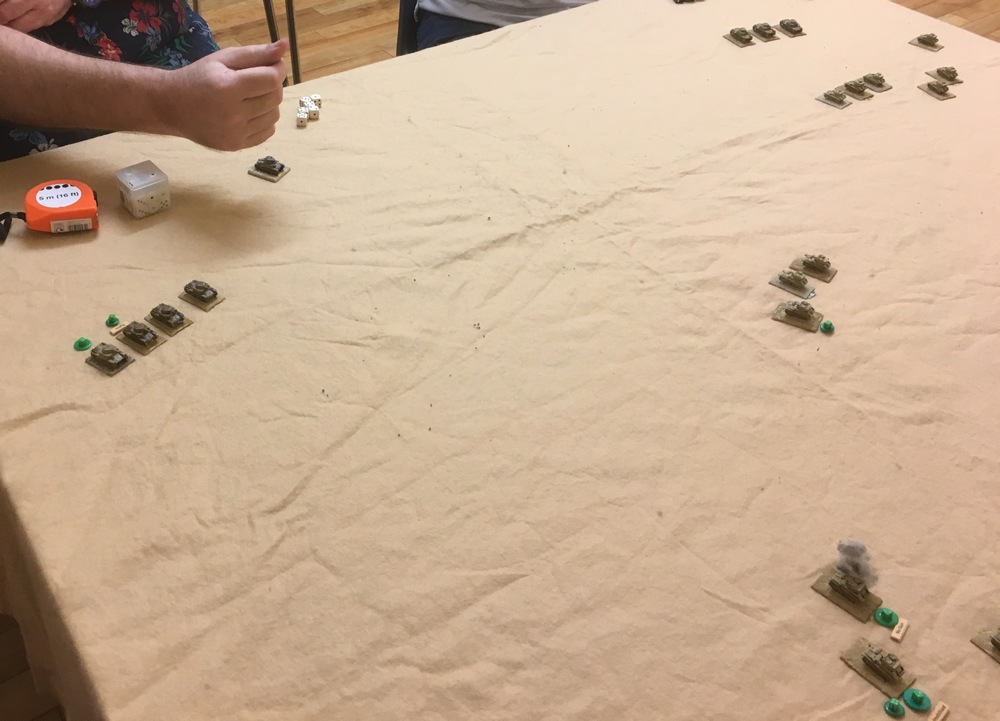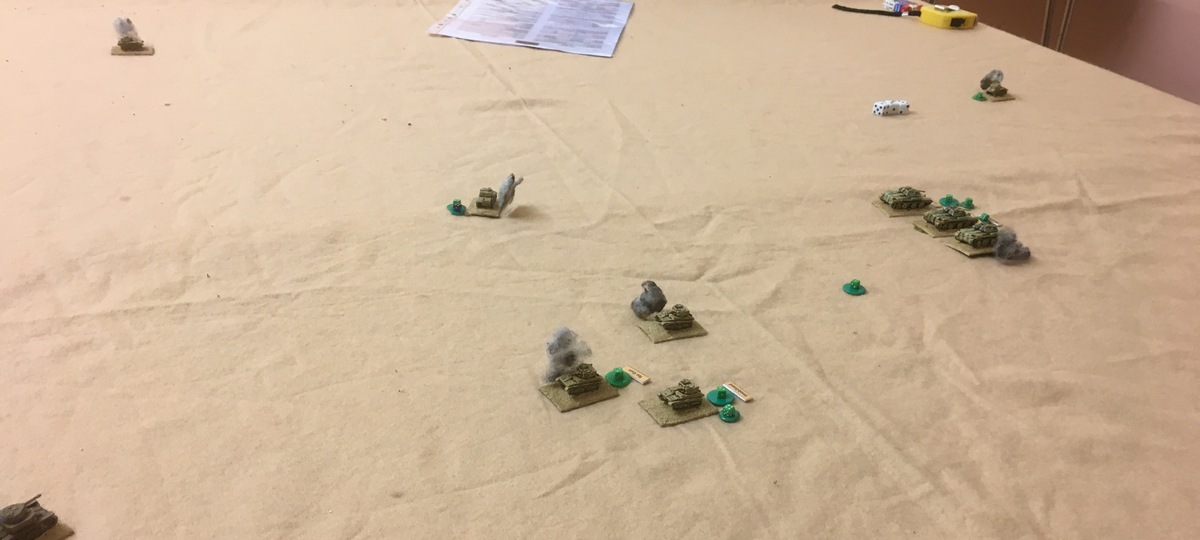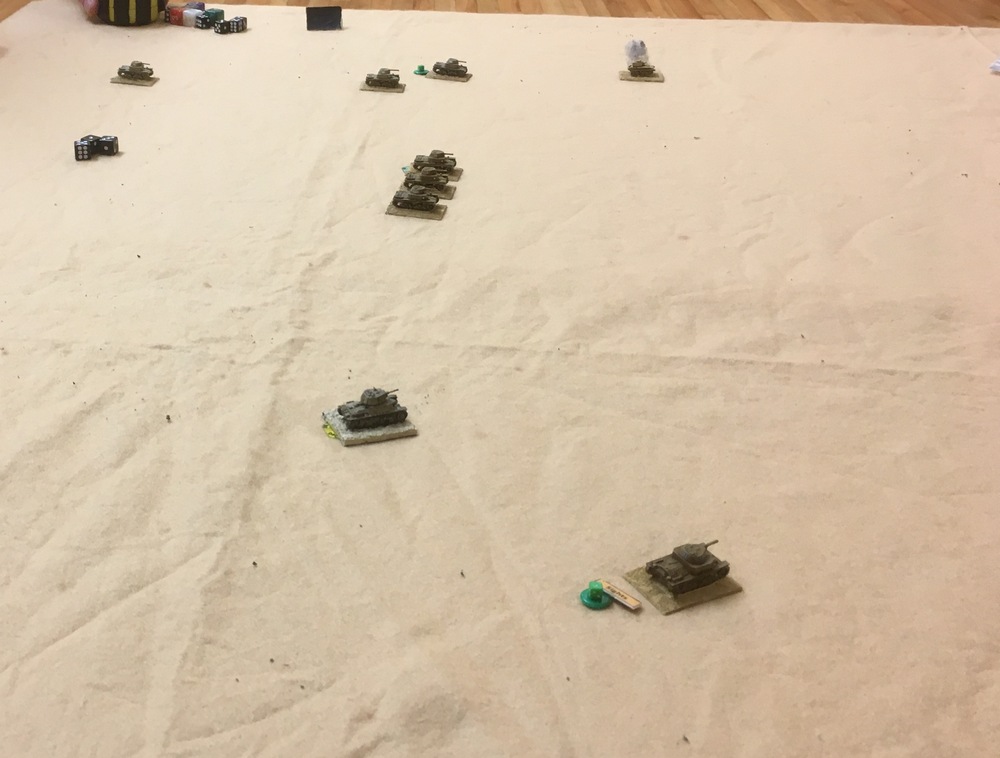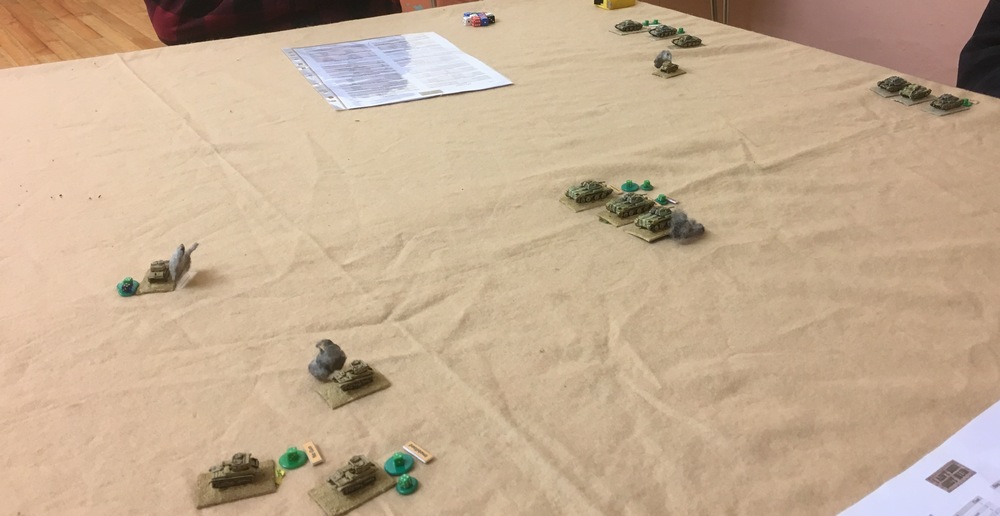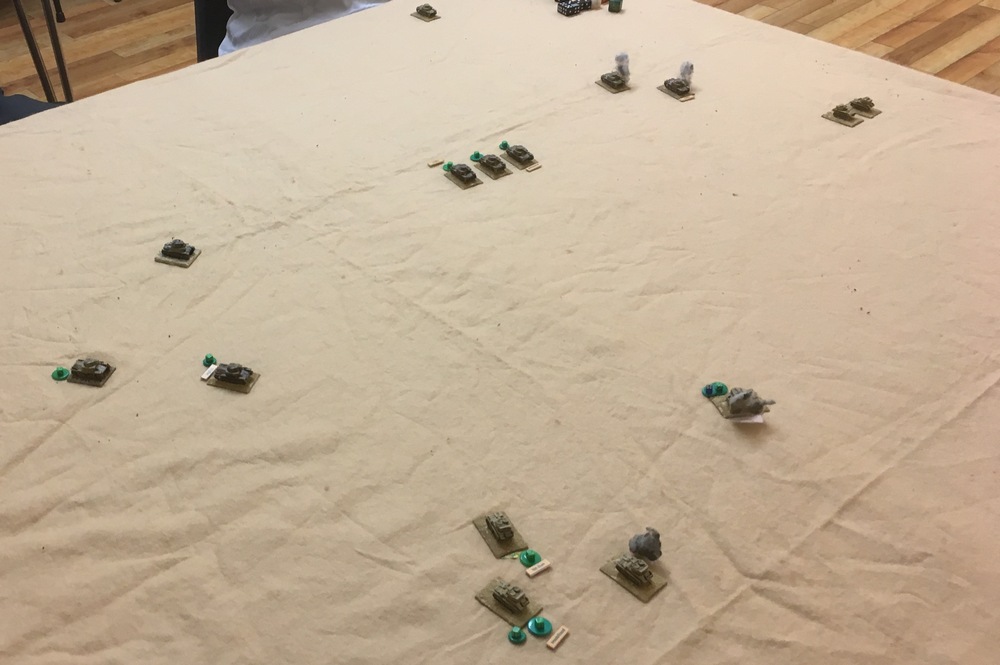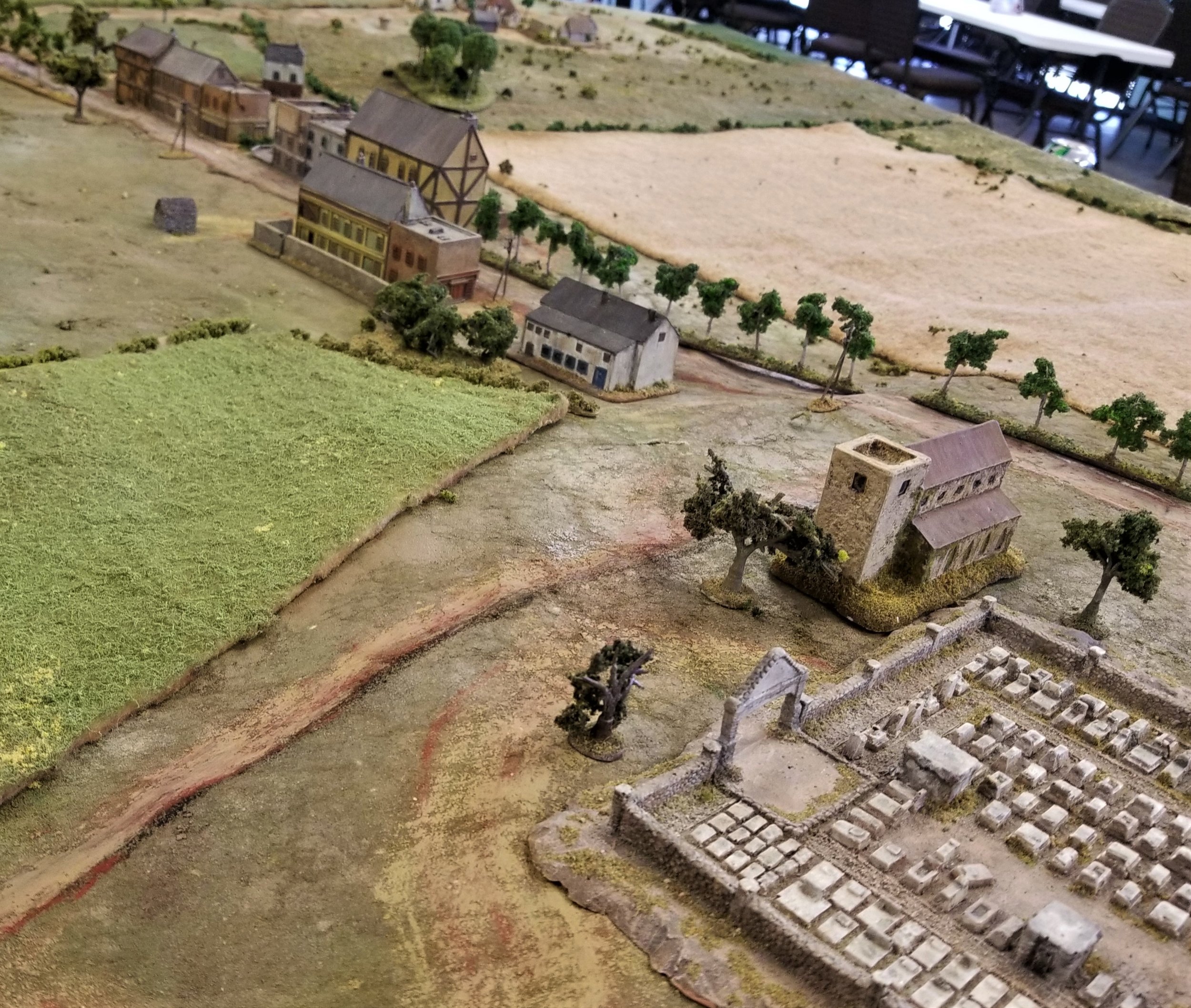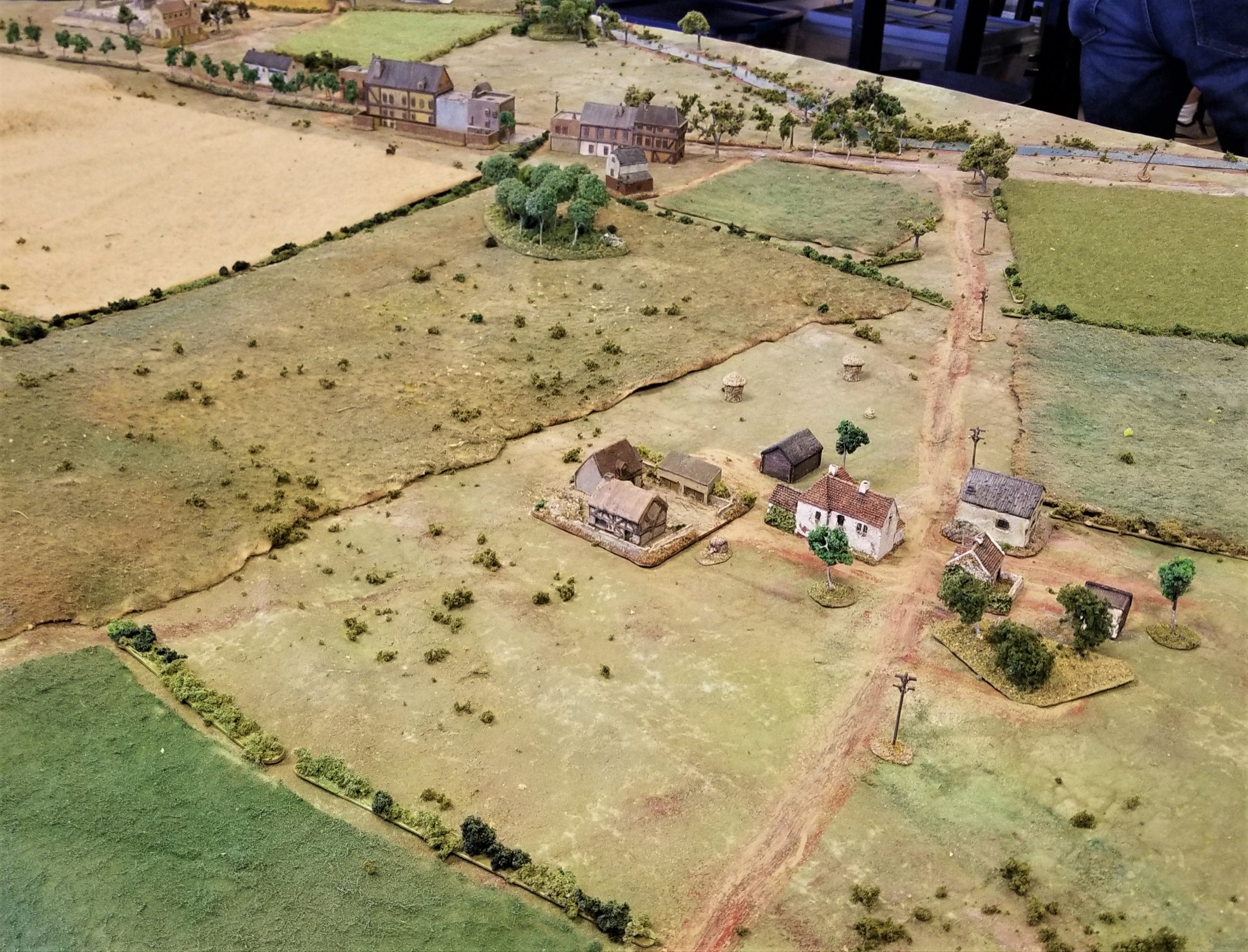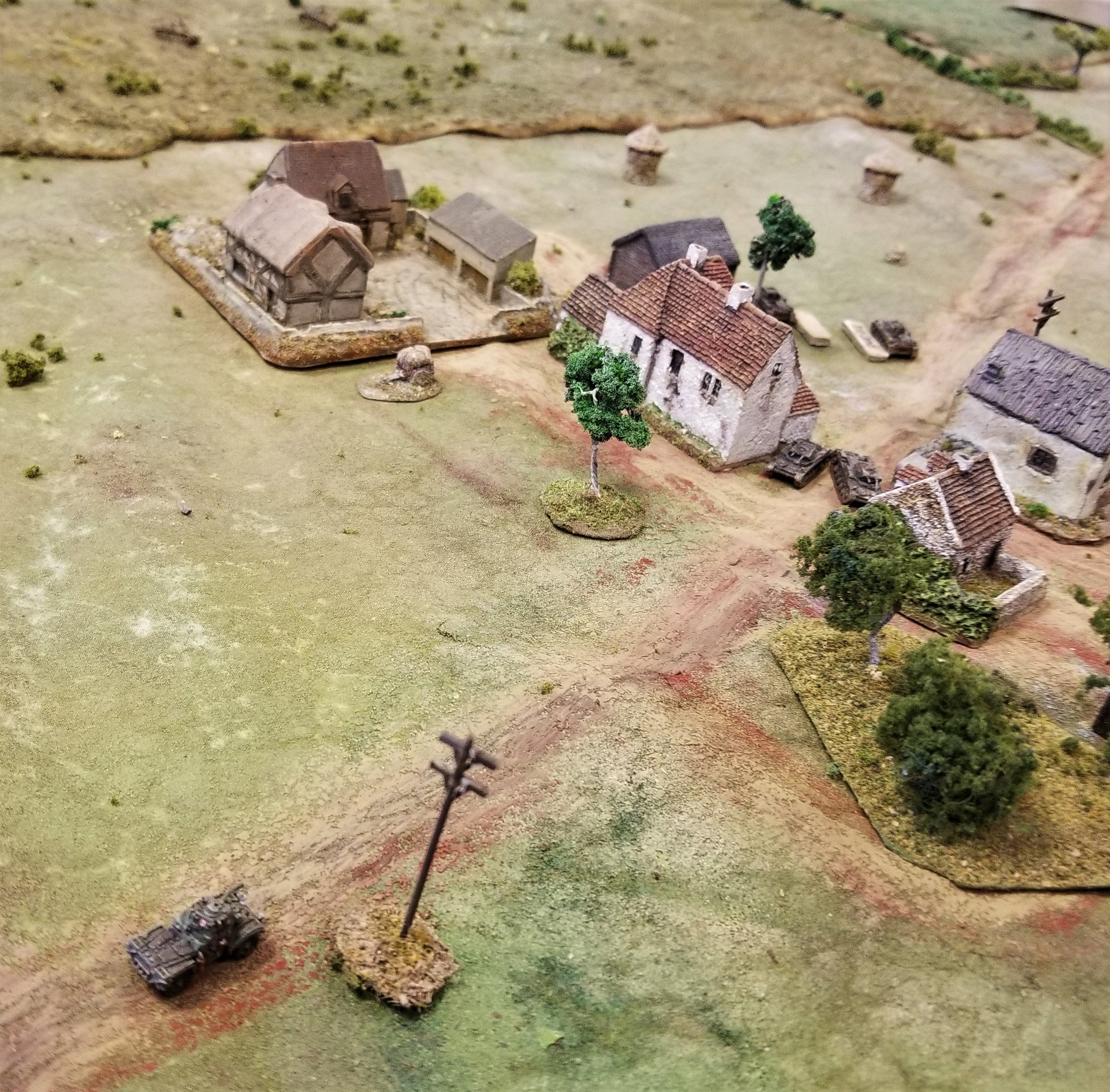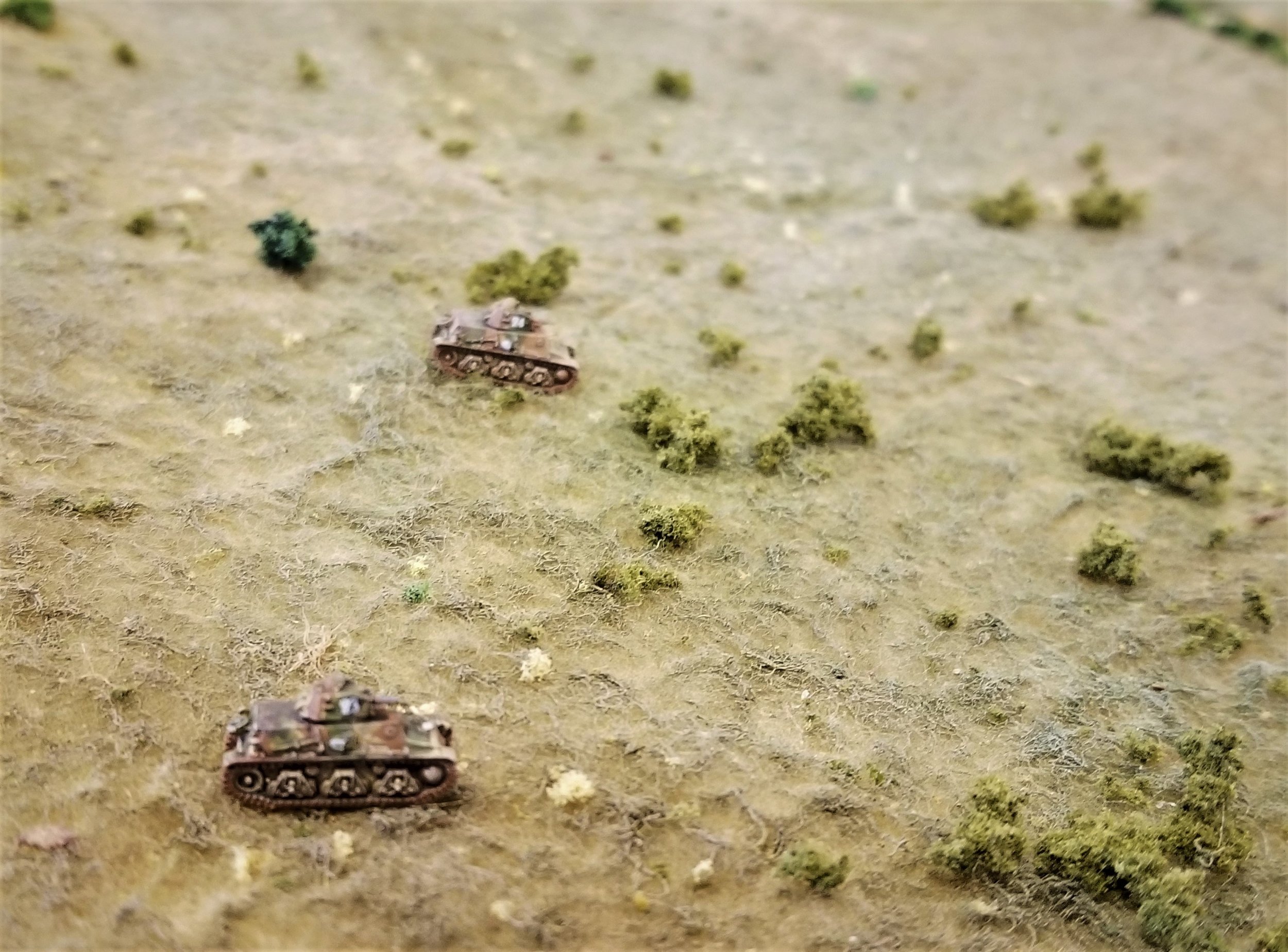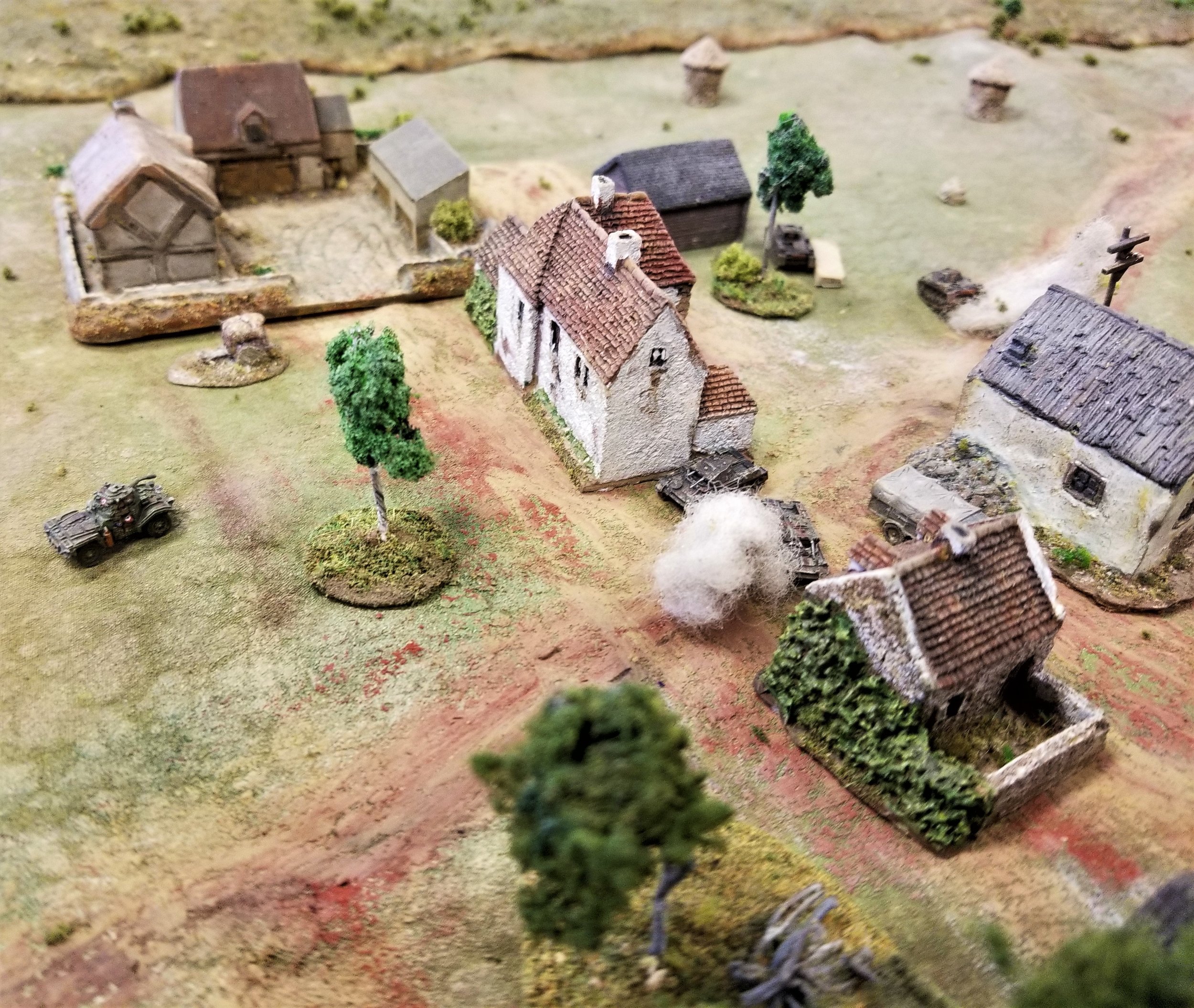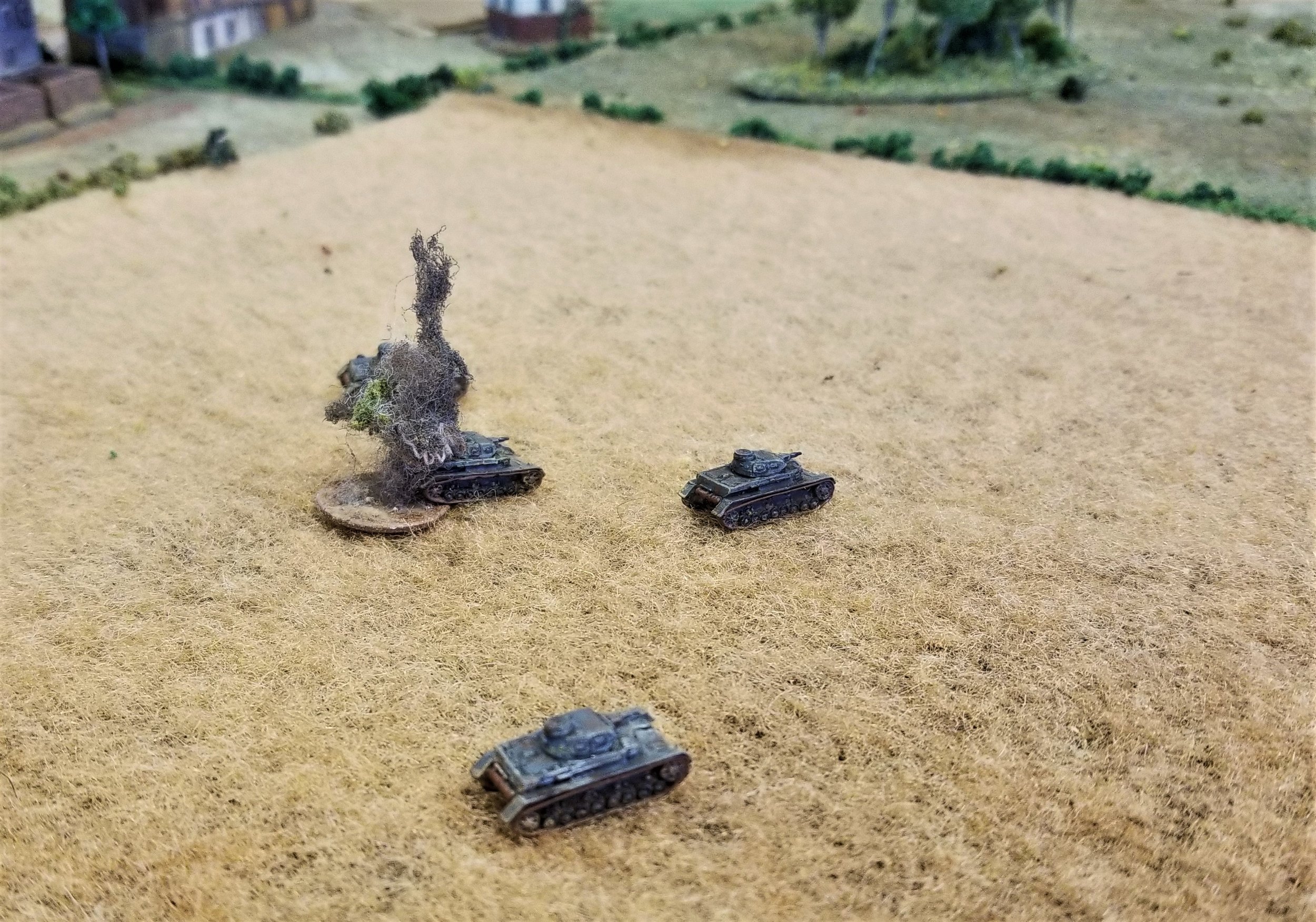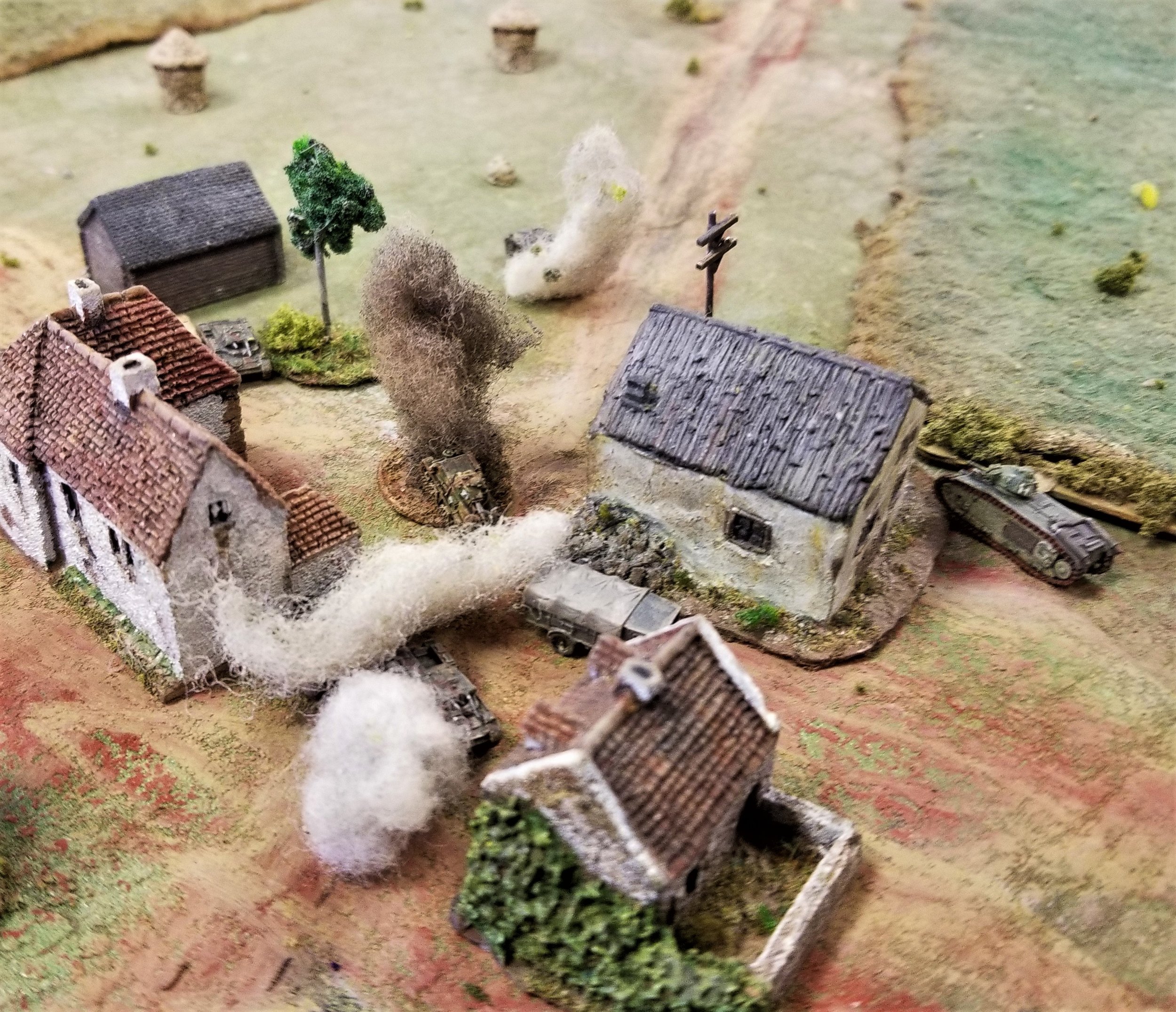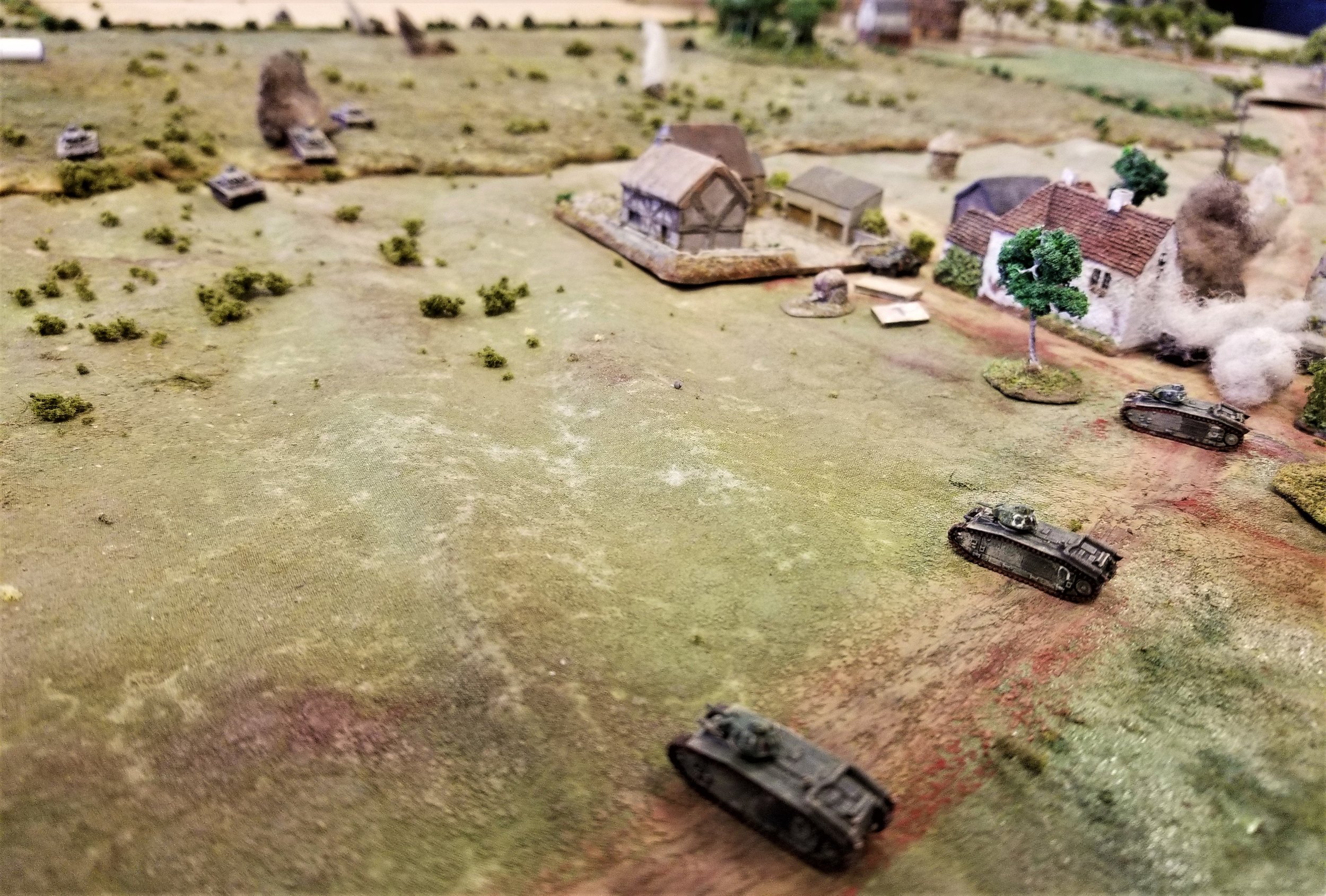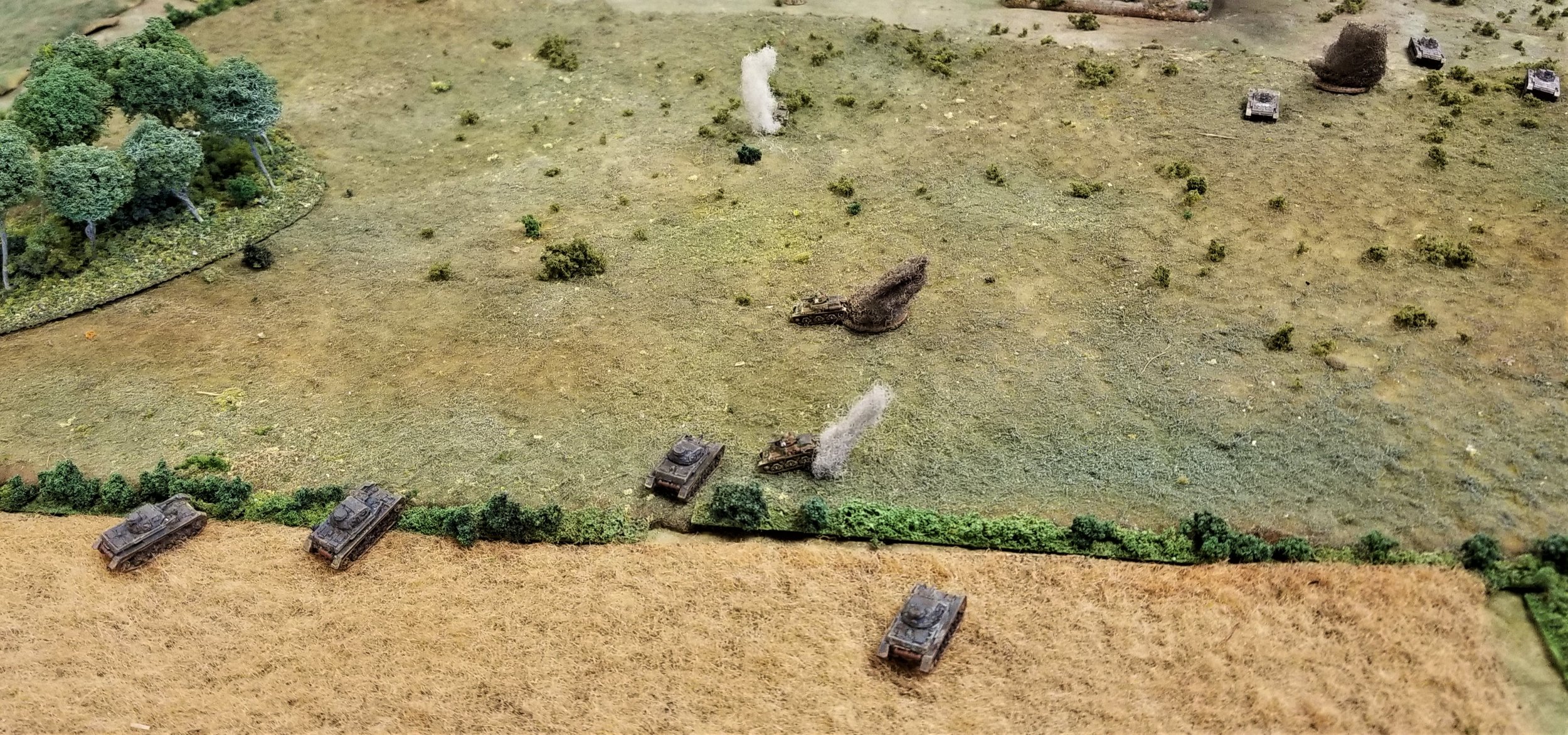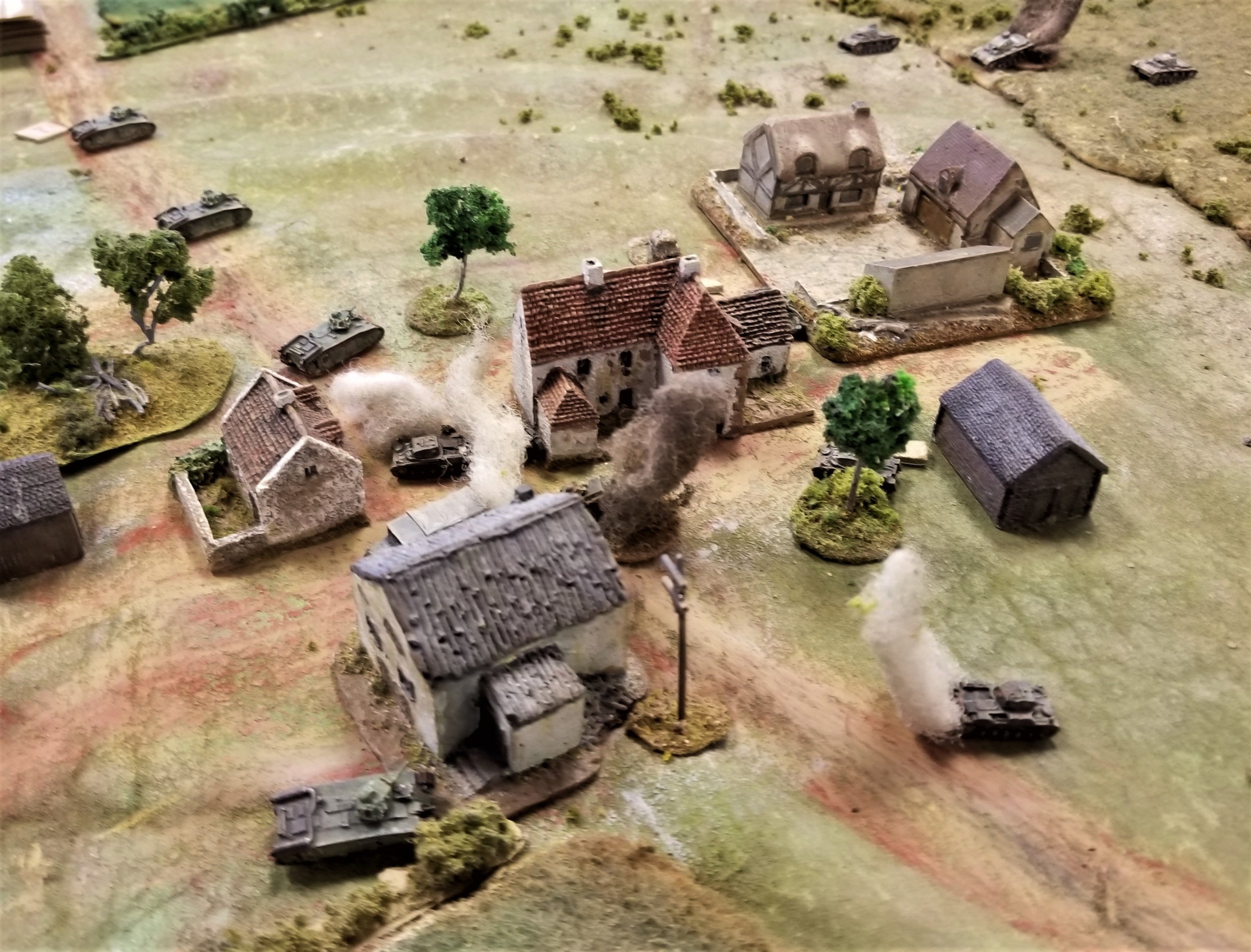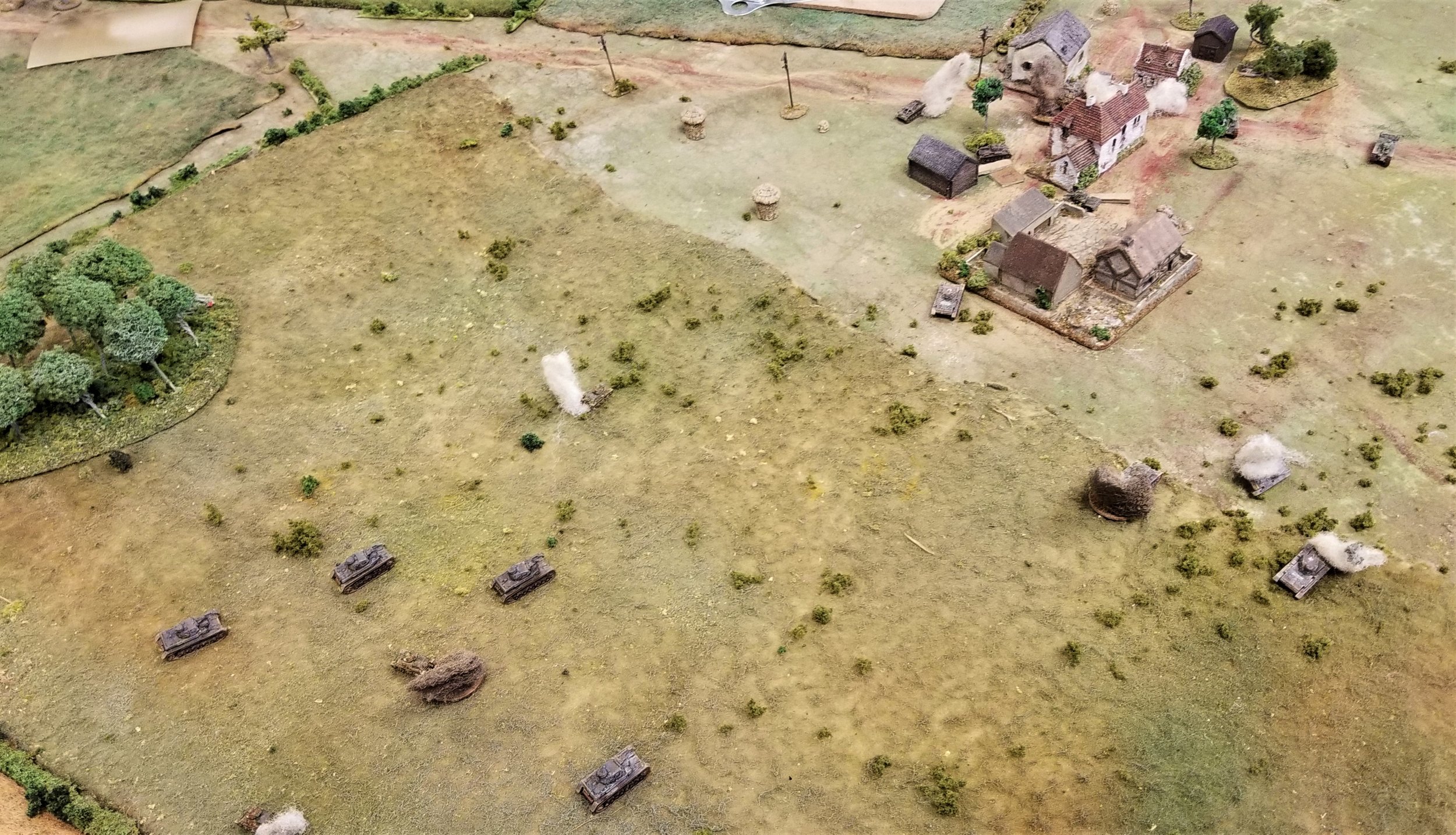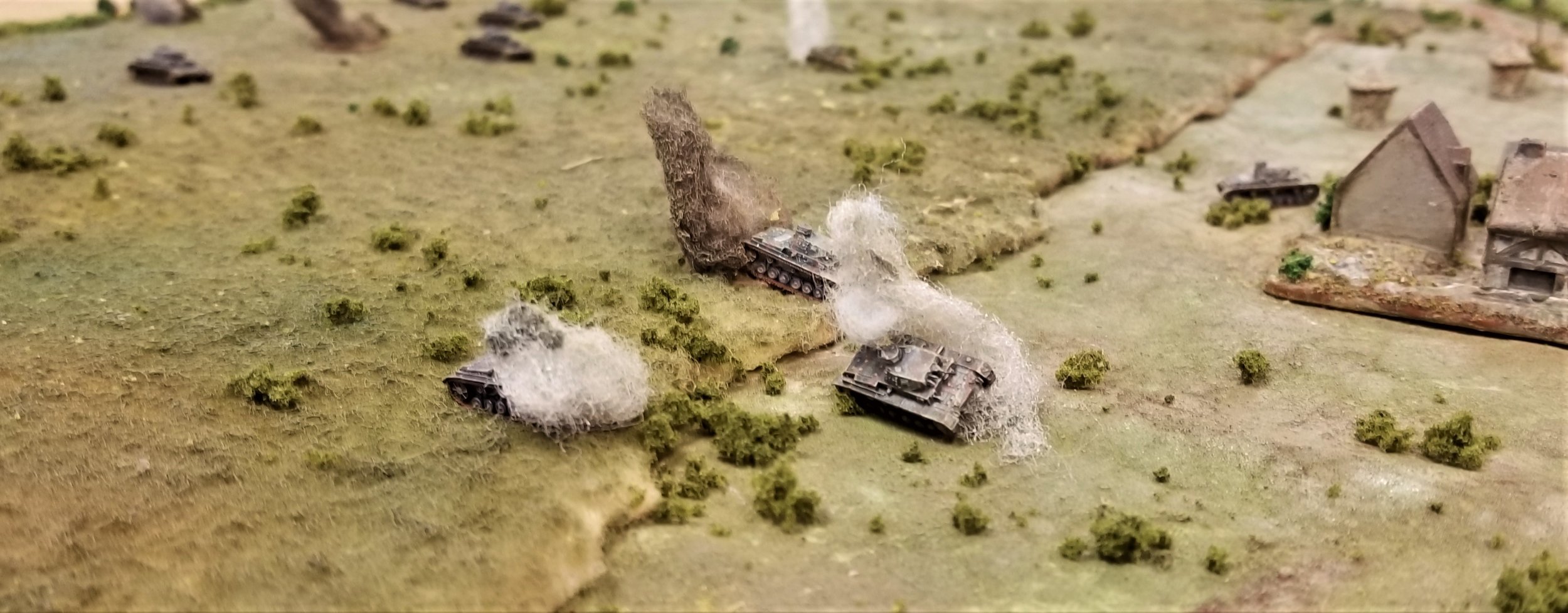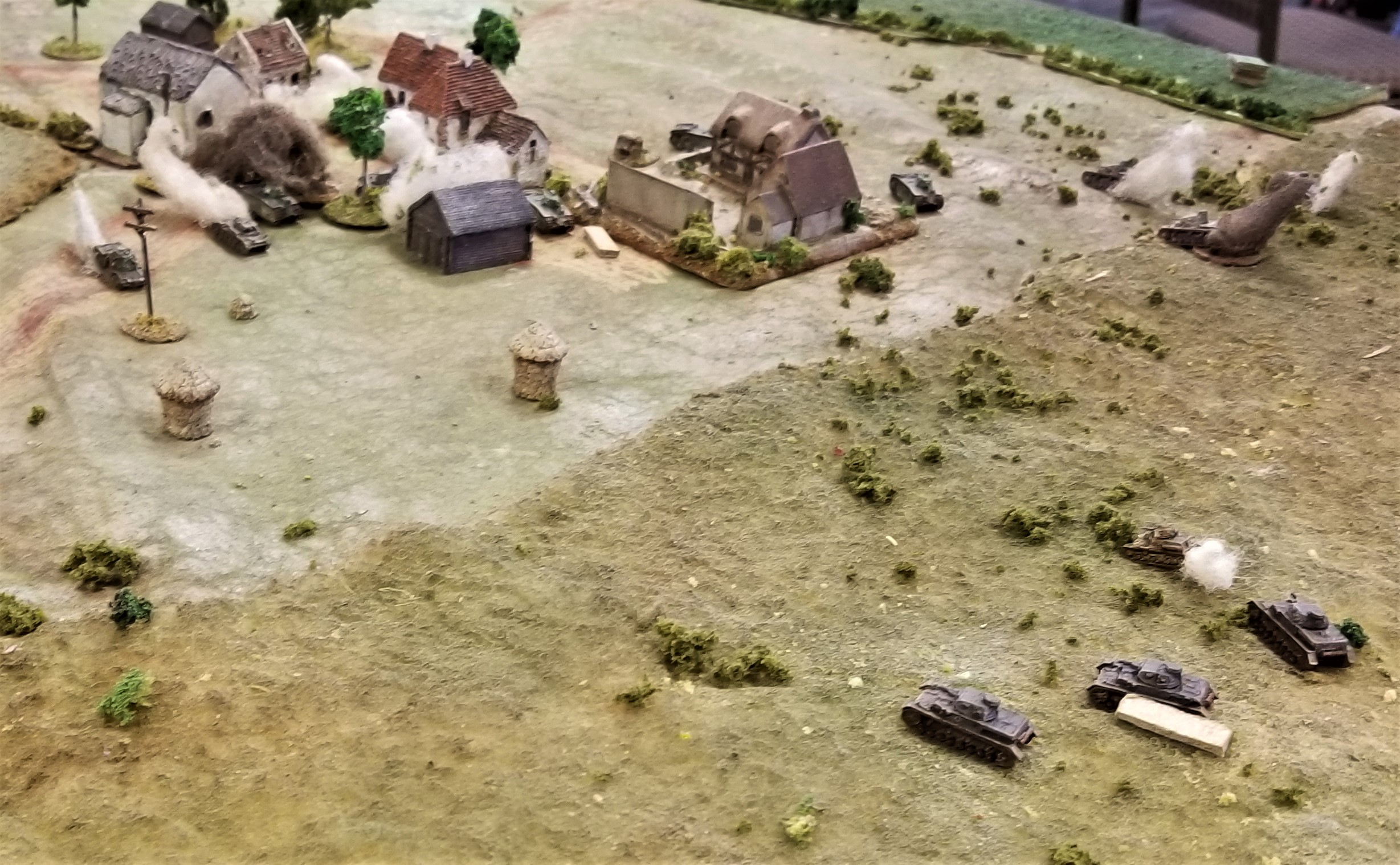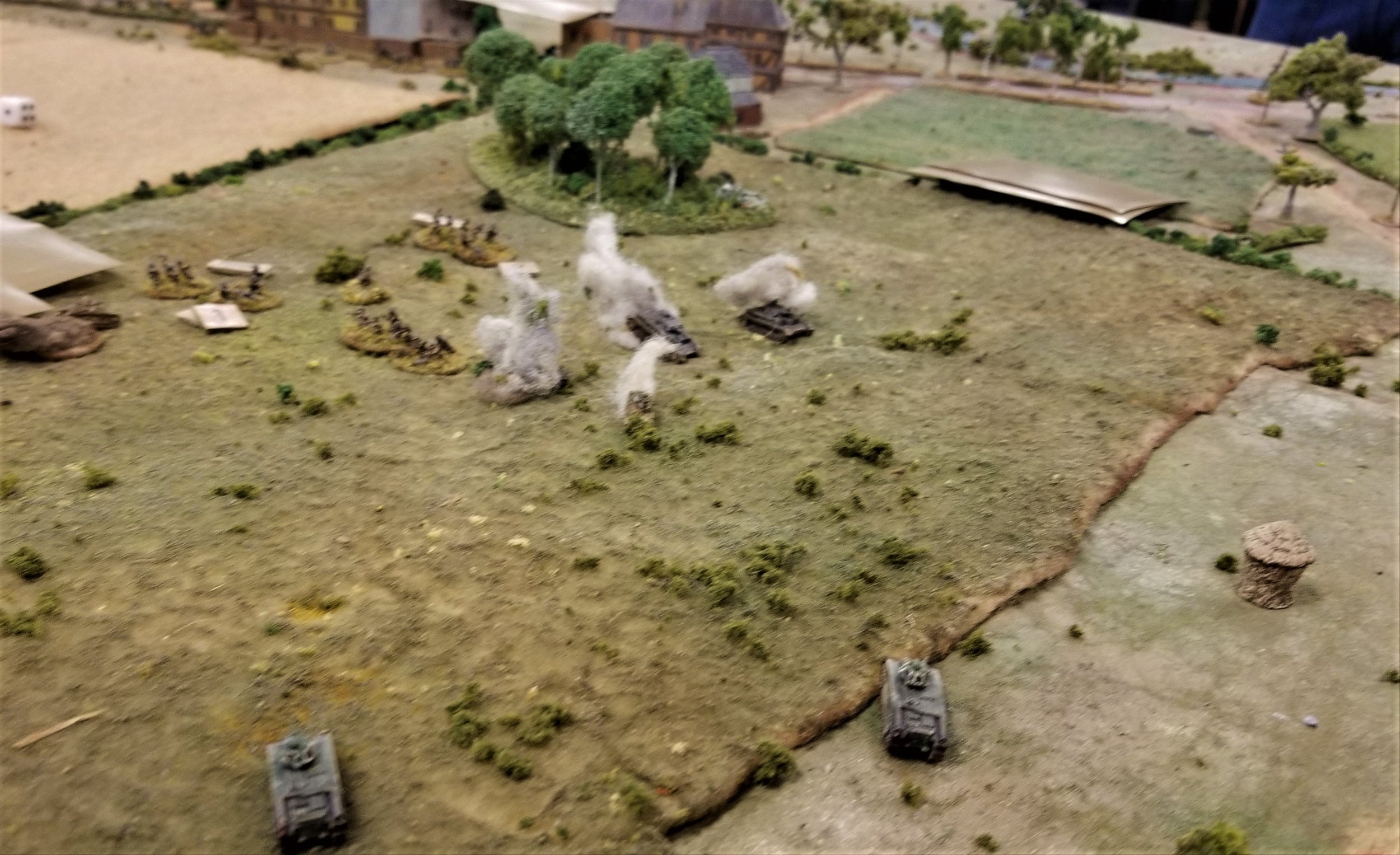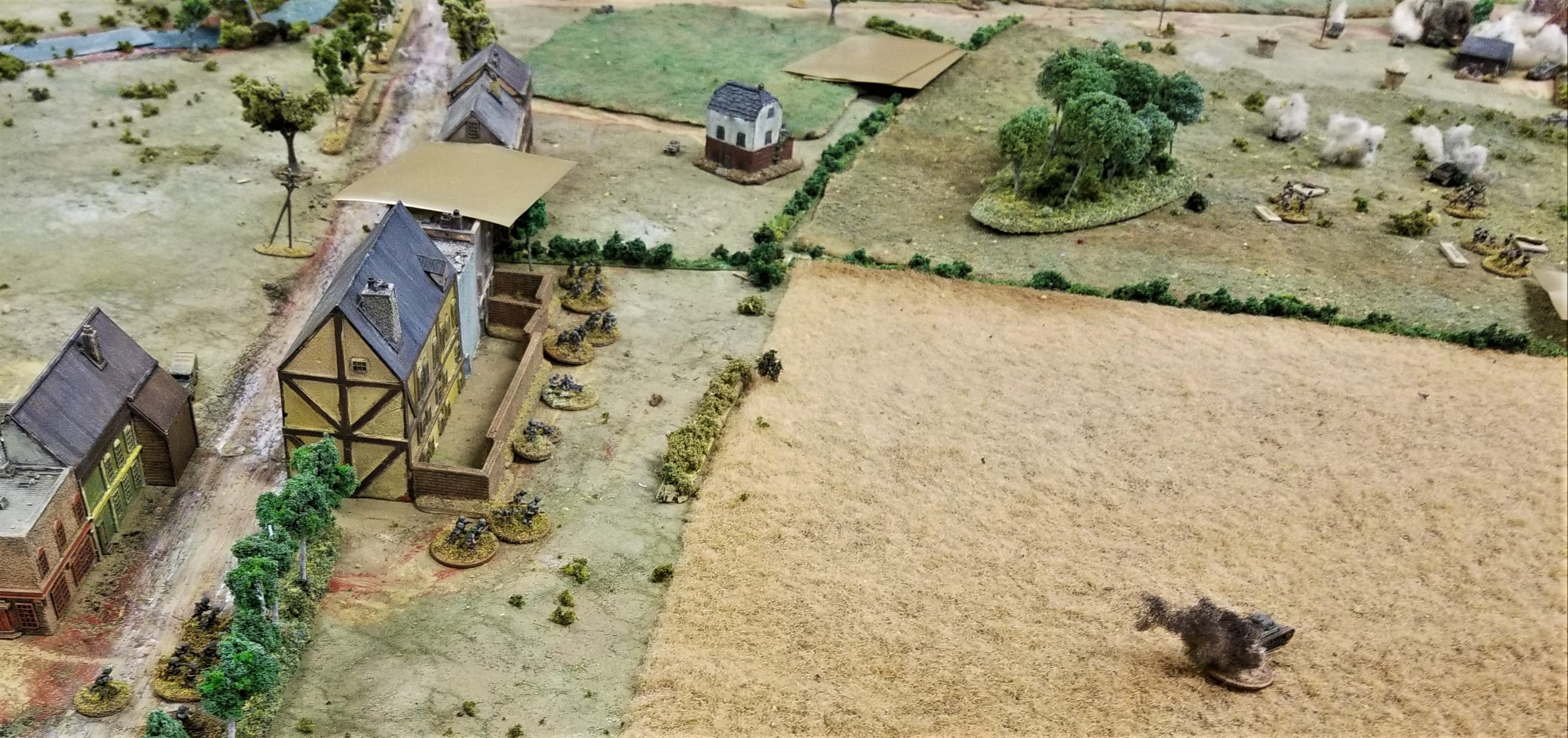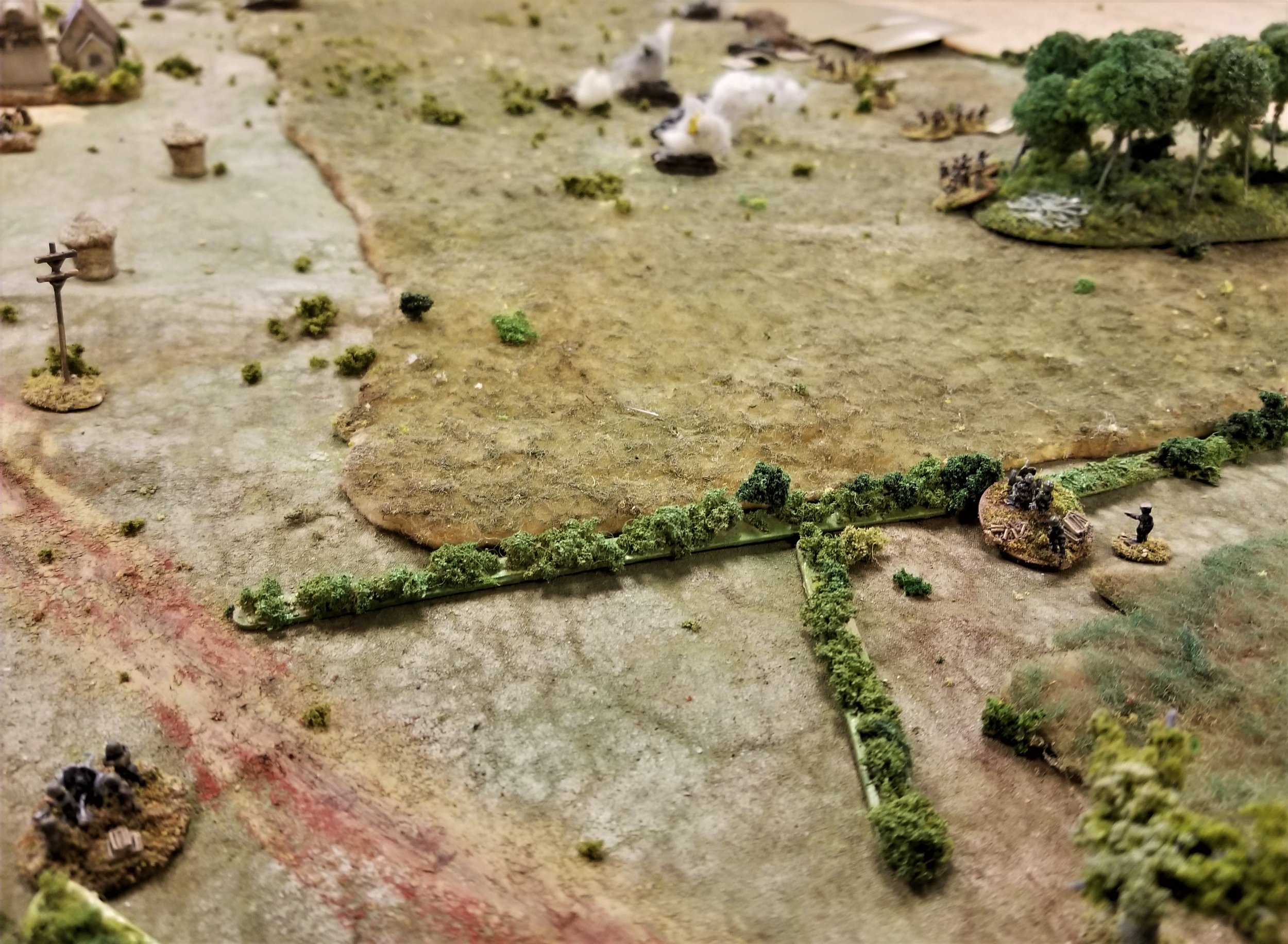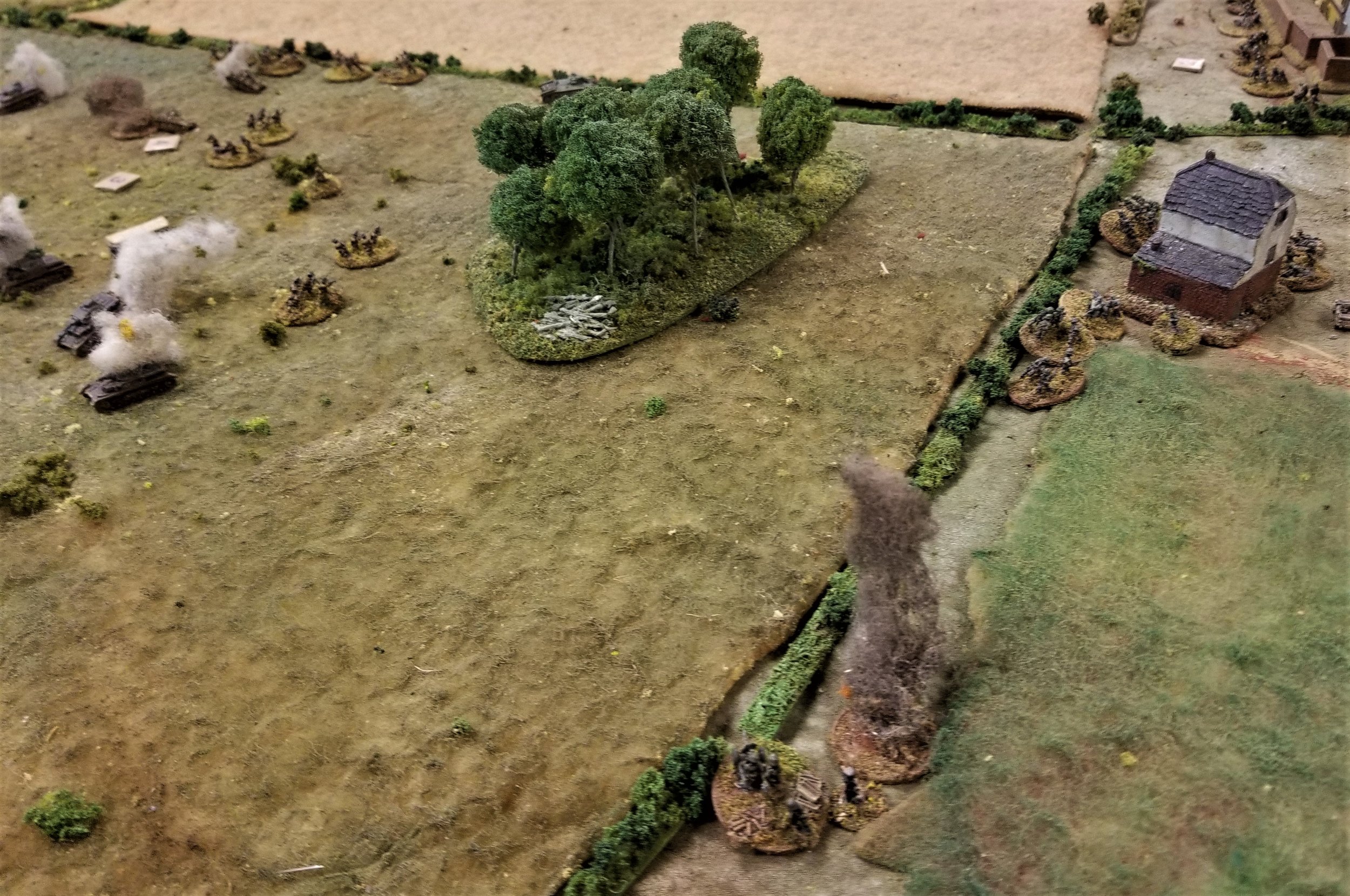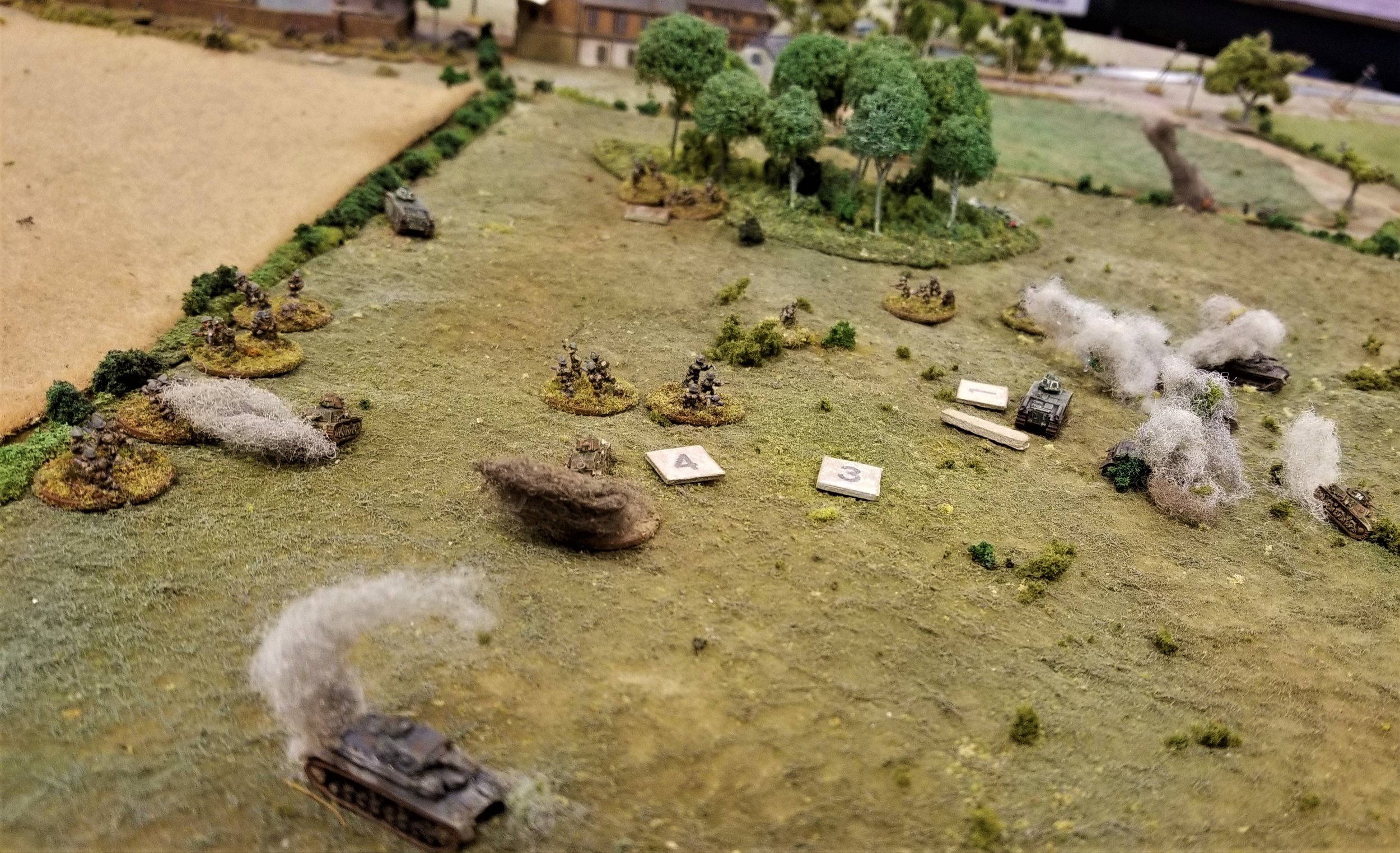A small table game, just 2'6" by 6' (17.6528cm x 11m for the great unwashed), last evening on Lard Island. Inspired by El Tel's talk of streetfighting I have been dabbling a bit with Berlin 1945 for a while now, and wanted to roll out a scenario with some of the flavour of that "End Game" battle.
On the German side, as alluded to the other day, the Doc had a platoon of Volksturm under their decrepit Zugfuhrer Willi Niederstanner, along side a Wehrmacht platoon under the joint leadership of Leutnant Oscar Pimpfe and old favourite Kurt Adler. In support they had an old Pak 36 with half a dozen Stielgrenate and two Panther of the Muncheberg Division, one of which had a green crew, the other an elite one under former parachutist turned tanker Jannke Lott.
Their job was to defend the Lard Strasse Haupt-Bahnhof, a major nodal point in the Reich's rail network, with significant good yards as well as the main station. More importantly the U-Bahn at Lard Strasse was being used as a field hospital and was jam packed with wounded men.
On the Soviet side one full company of infantry was supported by a reduced platoon of three T-34 85s and two SU122s. The T34s had a platoon of SMG armed infantry in support. Noddy, our Red for the evening, knew of, and cared nothing for, field hospitals. His orders were to seize the station and that was what he intended to do.
The table is probably best described by breaking it down into four quarters (each rectangular in shape). Looking at the table from the Soviet start line (call this the southern edge), the north-western quadrant was made up chiefly of railway yards, with three main lines surrounded by ancillary railway 'bits', a station block, coal depots, and a large derelict fuel thingy (like a gas works cylinder). In the south eastern quadrant the railway yards were bordered by a small factory area, Sidney's Unterhosen Fabrik being the main one, and to the south of that was a network of streets on a grid basis stretching to the table edge.
On the eastern side of the table a main street ran north-south with a few kinks in it to interrupt fields of fire. In the north east quadrant the main station bordered the railway lines, along with the newer U-Bahn station, a square with a staue was immediately in front of the Haupt-Bahnhof, and to the north and south of this were buildings and the odd side road running off to the east.
Noddy's ruskis stated off by moving through the buildings whilst holding back their tanks, clearly hoping to secure a base from which to launch their main assault on the station. On their right they ran into an MG42 and a squad of Wehrmacht under Kurt Adler, whilst in the centre and to the left the Volksturm under Niederstanner held the line around the Unterhosen Fabrik. A fierce firefight began, with the Soviets immediately bringing forward their Support Platoon of four MMGs on their right, and driving Kurt Adler and his Wehrmacht back in some disorder. On the left Niederstanner had firm, disappointed that he couldn't make use of the bundles of panzerfausts he had ready, but causing the advancing Soviets there some problems, especially with enfilading fire from an old WWI Maxim gun that they had.
Advancing on the heels of Adler the Soviet Third platoon sprung forward on the right, leaving the MMGs to redeploy to fire across the main road into the Volksturm in the factory. Despite the oblique angle the sheer weight of this fire began to tell, and gradually the Volksturm were whittled away until, with Soviet assault guns knocking out the Pak and turning their guns on this mix of young boys and old men, discretion became the better part of Valour and Niederstanner pulled his men back towards the main station, leaving the Soviets a clear run into the factory.
On the right the Soviet T34s were now advancing, cautious due to their previous experiences with German panzerfausts. In the square ahead the green crewed Panther snapped off a couple of shots before a clean shot from a Soviet 85mm main gun crashed through the turret armour and ignited the ammunition therein.
But what was this? A grinding of track and forward came Jannke Lott "Zwie hundert metre, feur!" rapped the Leutnant to his gunner, but fear clearly can get the better of a bravest, most elite crew when singly facing off three Soviet monsters - nothing hit.
Clang, clang. In response the Soviet shells crashed into Lott's Panther, but with little or no effect at first. Mind you, Lott's options were now severely limited as the last drops of fuel were expended and his tank now stood motionless by the staute of some former Prussian warrior.
Steadying his crew, Lott calmly corrected his gunner's errors, and swiftly two T34s were despatched, one exploding into flames, the other damaged, its crew scuttling for the cover of a friendly shell hole. The balance of the battle now swung in his favour. Unperturbed the remaining Soviet tank commander returned fire. Two successful shots saw Lott's engine catch fire, and after snapping off another couple of shots he and his crew abandoned their rather too warm vehicle.
On their left the Soviets now swarmed forward towards the factory, sensing victory. But from the west there came fresh hope for the Germans, never before had the sight of Fat Nick been so welcome to the Rug Doctor. Sweeping through the factory came a French speaking platoon of SS Nordland. To the strains of "Non, je ne regrette rien" this legion of the damned came on with their assault rifles dealing a devastation amongst the advancing Russians that was frightening to see.
On their right another SS unit, smaller but perfectly formed, slipped fleet of foot amongst the ruins. A force of Norwegian panzerknackers under their Hauptscharfuhrer, that giant, Per Annokers, swiftly damaging one SU122 before going on to immobilise the second. Again the battle turned in the German favour.
But Comrade Noddy was no fool (he is actually, so what follows must have been a fortunate error) and had held back one trump card. Now, seeing the MMGs of the support platoon being decimated by the Frenchmen he flung forward these close quarter troops, and in the ruins of the Knicker Factory the embodiment of two political creeds fought to the last.
It was a desperate affair. Untersturmfuhrer Jaques Brioche, all his men dead around him, fought off one Soviet assault on his own before succumbing to the inevitable second wave. Scharfuhrer Pascal Chirac and Rottenfuhrer Eugene le Pen and their squads came close to over- running the Soviet Second Platoon and the MMGs of the Support Platoon before finally being wiped out to a man by the SMG troops in close assault. The last dice were thrown, the Gods of war had cast their vote and, reforming and rallying his men, Noddy drove on again to the Haupt Bahnhof, all German resistance melting away.
It was a tough fight, and one that could have gone either way. The Soviets are an interesting conundrum in Gotterdammerung, as whilst they start off full of vim, they very quickly fall apart. Noddy did exactly the right thing, allowing his rifle platoons to soak up all of the German firepower whilst gradually whittling them down before landing the knockout blow with his SMG troops. The Fat Lad was uncharacteristically flamboyant as the French SS (being obliged to speak French all evening may have helped here), and the attack of the Nordland was a chilling sight. Indeed it seems entirely appropriate that they were killed to a man during the fighting (with the exception of some Swedes on a Pak 40 which, for some reason, was deployed in the railway yards where no tanks could get to(?).
Dazza's Volksturm and Wehrmacht performed stoically, but they looked like what they were, men exhausted by six years of war, and, whilst able to slow the Soviets, were never capable of stopping them dead.
One interesting point that I think emphasises the violence of the battle was the number of Big Men casualties. The Germans lost six out of seven, the Soviets almost as many. All in all a game enjoyable as it reflected the nasty, gritty reality of the fighting for Berlin in 1945. We used poker chips for the first time, rather than cards - the Jury is still out on that. Like Martyn, I like the pretty pictures on cards.
Richard Clarke





